
MARCH 2023 - VOL 84 | NO. 2 The Voice for Missouri Outdoors
CONSERVATION FEDERATION
PRESERVING OUR CONSERVATION HERITAGE
For more than eighty-seven years, the Conservation Federation of Missouri (CFM) has served as “The Voice for Missouri Outdoors.” Join in our efforts to secure our stronghold as advocates for our state’s wildlife and natural resources by becoming a dedicated member of our Founders Circle.

Your contribution will play an influential role in preserving Missouri’s rich outdoor heritage.

Each year, earnings from the endowment will be used to support CFM’s education and advocacy efforts. Special recognition will be given to those who reach each level of giving. Additionally, memberships will be recognized at our annual Convention.
Make your contribution today, to preserving our state’s conservation legacy.
FOUNDERS CIRCLE For more information contact Michelle at 573-634-2322 Ext. 104 or mgabelsberger@confedmo.org Founders Circle Levels Bronze - $5,000 to $9,999 Silver - $10,000 to $34,999 Gold - $35,000 to $74,999 Diamond - $75,000 or More Bronze Level Zach Morris-2022 David Urich-2022
Spring Into Conservation
Spring is upon us, and it’s that time of year when we get to spend more time in our wonderful outdoors. It’s a beautiful time of year to get the dust off your fly rod with the Missouri trout opener on March 1st, or get those hiking shoes out and spend some time on the many trails we have to offer. I am already starting to think about turkey hunting, mushroom hunting and crappie fishing, and I have the opening day of Spring Turkey Season on April 17th marked on my calendar. Be sure to check out Jeff Blystone’s turkey hunting article on pages 54 and 55.
Speaking of getting outdoors, at the end of winter last year, I had a fantastic opportunity to join the Missouri Department of Conservation staff and volunteers to go on a bear den check. We went in and checked the overall health of a sow bear, and her three little cubs. It was an amazing experience to be able to hold the cubs and watch the MDC teamwork. It was extremely impressive how organized and flawlessly the entire team worked in unison with safety at the top of its mind. Those little cubs weighed around 4-5 pounds, and holding them for the first time was something I will never forget.

It was great to see experience this in the field, especially after the Resolution that was passed in 2021 that garners support for the Science-Based Management of Black Bears in Missouri. I also had the opportunity to testify at two of the Conservation Commission meetings regarding that resolution. It was no doubt that the black bear populations are just one more success story in managing the great resources of the state.
Also, our Annual Convention just finished at the end of February, and we cannot thank everyone that came together for this 87th Annual Convention of CFM. It takes so many wonderful people, staff volunteers, donors, Conservation Leadership Corps students, and so many more. The auction, Resource Advisory Committees, Resolutions, Natural Resource Breakout Sessions, and a keynote speech by Governor Nixon were all top-notch. It’s great to see the beautiful friendships that continue to grow each and every year.
Please don’t forget that the legislative session is in full swing and you can monitor all our bills on our Legislative Action Center. Please take a moment to answer the call to action when you see us issue those alerts this session. We were certainly pleased that State Representative (and CFM life member) Bruce Sassmann has been appointed the Chairman of the Conservation and Natural Resources Committee in the House.
I hope that each of you has taken the opportunity to connect even further with nature for yourself this year. Spending time in the outdoors can be the best way to reflect and pause on all the stresses of life. I also hope you can join in to support CFM and be a part of the “Voice for Missouri Outdoors”. Our staff, board, and so many others truly can’t continue our collaborative success without relying on each other.
Yours in Conservation,
Tyler Schwartze CFM Executive Director, Editor
Director’s Message
- 2023 3
MARCH
Tyler holds one of the bear cubs last winter during a bear den check with the Missouri Dept. of Conservation. (Photo: Courtesy of CFM)
March 2023 - V84 No. 2
OFFICERS
Zach Morris - President
Bill Kirgan - President Elect
Ginny Wallace -Vice President
Benjamin Runge - Secretary
Bill Lockwood - Treasurer
STAFF
Tyler Schwartze - Executive Director, Editor
Micaela Haymaker - Director of Operations
Michelle Gabelsberger - Membership Manager
Nick Darling - Education and Communications Coordinator
Erica Loethen - Development Coordinator
Joan VanderFeltz - Administrative Assistant
Emma Kessinger - Creative Director
ABOUT THE MAGAZINE
CFM Mission: To ensure conservation of Missouri’s wildlife and natural resources, and preservation of our state’s rich outdoor heritage through advocacy, education and partnerships.



Conservation Federation is the publication of the Conservation Federation of Missouri (ISSN 1082-8591). Conservation Federation (USPS 012868) is published bi-monthly in January, March, May, July, September and November for subscribers and members. Of each member’s dues, $10 shall be for a year’s subscription to Conservation Federation Periodical postage paid in Jefferson City, MO and additional mailing offices.

Send address changes to:
Postmaster
Conservation Federation of Missouri 728 West Main Jefferson City, MO 65101
FRONT COVER
Deer Hides Dunn Ranch Prairies Turkey Tips for Tough Times Missouri Deer Hunter's Bible The Old Oak Tree What Would Aldo Do? Make Plans for Native Gardening This Spring Ozark Flowers to Feathers Winter Trout Fishing Plywood Canoes
What is CFM Events Schedule CLC Travels for CYCL CFM Clay Shoot Flyer Conservation Day at the Capitol Flyer Bledsoe Inducted in the Conservation Hall of Fame 6 16 18 22 23 24 Highlights
CONTENTS Features
Conservation Federation
4 CONSERVATION FEDERATION Director's Message President's Message Life Members Affiliate Spotlight Agency News 3 8 11 13 36 Departments 32 34 56 28 32 34 42 44 48 52 54 56 60
Photo was captured by Kent Campbell, in Benton County using a Canon EOS 5D Mark IV, shot at ISO 640 300 mm 1/320 f28.
Thank you to all of our Business Partners.

Platinum
Gold
Bushnell
Doolittle Trailer
Enbridge, Inc.
Silver
Custom Metal Products
Forrest Keeling Nursery
Learfield Communication, Inc.
Lilley’s Landing Resort & Marina
Bronze
Association of Missouri Electric Coop.
Black Widow Custom Bows, Inc.
Burgers’ Smokehouse
Central Electric Power Cooperative
Drury Hotels
Iron
Bass Pro Shops (Independence)

Bee Rock Outdoor Adventures
Blue Springs Park and Recreation
Brockmeier Financial Services

Brown Printing
Cap America
Central Bank
Community State Bank of Bowling Green
G3 Boats
MidwayUSA
Pure Air Natives
Missouri Wildflowers Nursery
Mitico
Quaker Windows
Redneck Blinds
Rusty Drewing Chevrolet
Roeslein Alternative Energy, LLC
Simmons Starline, Inc.
St. James Winery
Gray Manufacturing Company, Inc.
HMI Fireplace Shop
Hodgdon Powder Company, Inc.
Missouri Wine & Grape Board
NE Electric Power Cooperative, Inc.

Dickerson Park Zoo
Farmer’s Co-op Elevator Association
Gascosage Electric Cooperative
General Printing Service
GREDELL Engineering Resources, Inc.
Heartland Seed of Missouri LLC
Hulett Heating & Air Conditioning
Kansas City Parks and Recreation
NW Electric Power Cooperative, Inc.
Ozark Bait and Tackle

Williams-Keepers LLC
Woods Smoked Meats
Lewis County Rural Electric Coop.
Missouri Native Seed Association
Scobee Powerline Construction
Sprague Excavating
Tabor Plastics Company
Truman’s Bar & Grill
United Electric Cooperative, Inc.
Your business can benefit by supporting conservation. For all sponsorship opportunities, call (573) 634-2322.
MARCH - 2023 5
Business Partners
Mission: To ensure conservation of Missouri’s wildlife and natural resources, and preservation of our state’s rich outdoor heritage through advocacy, education and partnerships.



In 1935, conservationists from all over Missouri came together to form the Conservation Federation of Missouri (CFM) with the purpose to take politics out of conservation. The efforts of our founders resulted in the creation of Missouri's non-partisan Conservation Commission and the Missouri Department of Conservation (MDC). Since then, CFM has been the leading advocate for the outdoors in Missouri.
Partnerships
Over 100 affiliated organizations

Share the Harvest Corporate & Business Partnerships

State & Federal Agency Partnerships
National Wildlife Federation Affiliate


Operation Game Thief

Operation Forest Arson

David A Risberg Memorial Grants

Missouri Stream Team
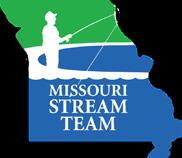
Education
Conservation Leadership Corps

Missouri Collegiate Conservation Alliance

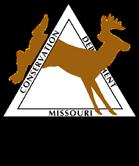
Confluence of Young Conservation Leaders
Affiliate Summit
Scholarships for youth and students
Governor’s Youth Turkey Hunt
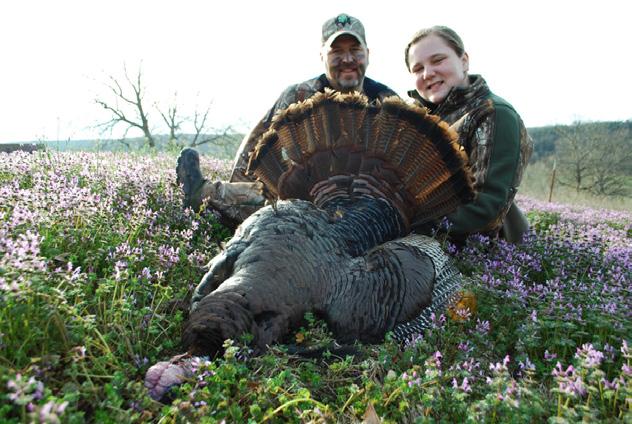
National Archery in the Schools Grants

Conservation Federation Magazine
Advocacy
Legislative Action Center

Resolutions to lead change
Natural Resource Advisory Committees
Conservation Day at the Capitol Staff and members testify in hearings for conservation and natural resources

Young Professionals
"The Voice for Missouri Outdoors"
Ways You Can Support CFM

Membership

Support our efforts to promote and protect conservation and natural resources in our state Members will receive our magazine six times a year, event information, our bi-weekly enewsletter, and the opportunity to grow our voice







Affiliate Membership
CFM provides the platform for a diverse group of organizations to have their conservation voices be heard Affiliates have the opportunity to apply for grants, receive educational training and promote the mission of their organization.




Scholarships and Grant Support
CFM provides scholarships to graduates and undergraduates
We also provide grant funds to youth education programs and to affiliate projects Contributing will help future generations initiate boots on the ground projects
Life Membership
Become a life member for $1,000 Life memberships are placed in an endowment fund that allows us to continue our work in perpetuity
Business Partnerships
Business partners will enjoy recognition in each magazine issue along with opportunities to reach and engage with our active membership Ask us about our different Business Partnership levels.
All of our events have raffles with both silent and live auctions. The contributions of in-kind products and services not only assists in raising funds for conservation, but also promote the businesses that support CFM

1935 1936 1940 1944 1946 1960 1974 1984 1989 1958 1969 1976 1991 1992 2002 2007 1982 2006 2009 2016 State Wildlife and Forestry Code published First deer season since 1937 First hunter safety program formed Parks and Soils Sales Tax passed Operation Forest Arson formed Conservation Federation of Missouri 728 West Main St, Jefferson City, MO 65101 Phone: (573) 634-2322 ~ Email: info@confedmo.org www.confedmo.org Stream Teams formed Missouri voters renewed Parks and Soils Sales Tax by 70.8% Outdoor Action Committee formed Amendment 4 created Missouri's non-political Conservation Commission Operation Game Thief formed
Become a Member today! CFM Celebrates 85 years
Urban fishing program formed in St Louis; first in the nation Missouri Department of Natural Resources formed Missouri National Archery in the Schools Program formed Parks and Soils Sales Tax renewed by voters by the highest percentage to date (80%) 2020
Federation of Missouri began Wildlife and Forestry Act passed First turkey season in 23 years Design for Conservation Sales Tax passed Share the Harvest formed Conservation Leadership Corps formed
Description Individual
Individual
Individual
Youth/Student Individual
Conservation
Name: E-mail: Phone: Address: Credit Card #: Exp. Date: Price $35.00 $60.00 $100.00 $20.00 $1,000.00
Supporter
Advocate
Sustaining
Lifetime
Event Sponsorship and Product Donation
Join online confedmo.org/join
What’s Your Favorite Fish?
Iusually try to write something in my column to encourage people to get outside and maybe try something new. This time of year, I know a lot of us are thinking about fishing, but not everyone who reads this is an angler. So instead of talking about why you should get out and go fishing this spring, I have a question: what is your favorite fish? For some people, that question might conjure images of a hard-fighting gamefish or maybe an elusive trout from a mountain stream. For others, their favorite fish might be a colorful species from the tropics, or something seen on display in an aquarium.
I think everyone – anglers and non-anglers alike –should have a favorite fish. Let me explain. Right here in Missouri, we are blessed with abundant and diverse water resources, and we have equally abundant and diverse fish populations. I would argue that some of our native freshwater fish are just as vibrant and beautiful as any tropical fish. Take the Longear Sunfish, for example. You might call it a bream, a pumpkinseed, or even a perch (though technically, the perch family Percidae includes Walleye, Sauger, Yellow Perch, and darters, but not sunfish). Whatever name you use, the Longear Sunfish is one of the most widespread fish in Missouri. It is also one of the most colorful, boasting brilliant blue and orange hues during the summer breeding season.
My personal favorite fish, the Northern Studfish, is a type of topminnow often found in warm, slow areas of Missouri streams. They have a small gold colored dot visible from above in the middle of their back. What you don’t see from above are the brilliant breeding colors: electric blue and red stripes along the side accompanied by yellow and orange fins with black borders.

Countless small fish exhibit beautiful breeding colors during spring and summer. So even if you aren’t an angler, I think you should have a favorite fish. Maybe the aptly named Rainbow Darter, which can be found hiding between rocks in most Ozark streams, or the Bleeding Shiner, whose bright red fins contrast with black stripes for a brilliant display.
If you love to fish, I’m sure you are already thinking about hitting the water as it begins to warm in the coming months. But whether you are an angler or not, you can have a great time looking for beauty below the water’s surface. This spring, take a hike near the creek, join a float trip, or go snorkeling in the lake. If you look closely, you might just find your new favorite fish.
Maybe I'll see you out there,
Zach Morris President, CFM
8 CONSERVATION FEDERATION
President’s Message
This artist’s depiction of my favorite fish, the Northern Studfish, proudly hangs in my office. It was painted by Dr. Amanda Rosenberger, then at the University of Missouri, who gave it to me when I completed my master’s degree. Dr. Rosenberger continues to paint beautiful wildlife art and is now the Assistant Unit Leader for the Tennessee Cooperative Fishery Research Unit at Tennessee Tech University. (Photo: Zachary Morris)
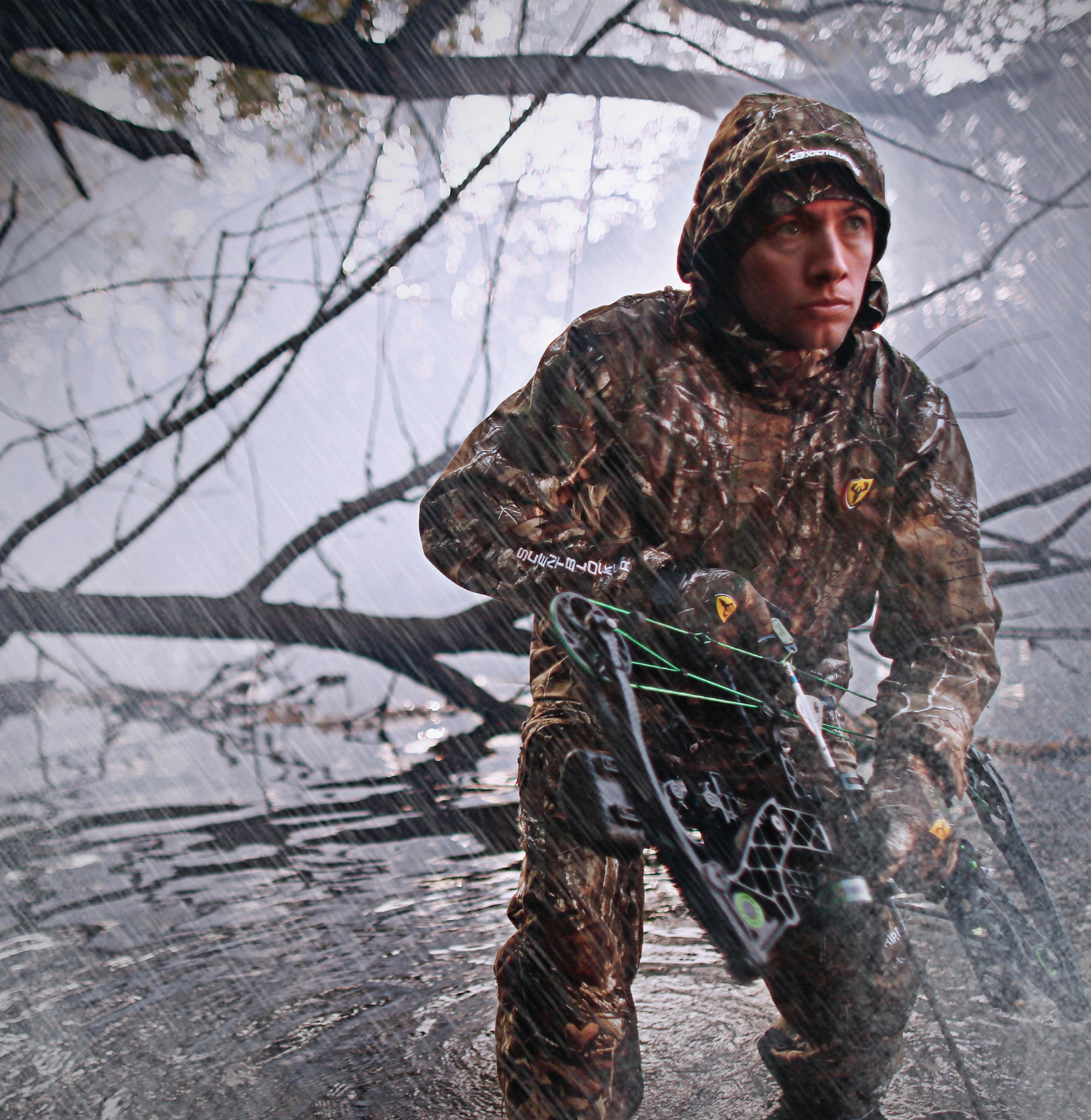









Going to the woods? Gear up with CONNECT WITH US Orscheln Outdoors™ 2-Person Ground Blind 107419147 Wicked Ridge Invader X4 Crossbow 107414185 Legacy Flag Chassis 6.5 Creedmoor Rifle 107408411 www.orschelnfarmhome.com • Hunting Clothing • Hunting Boots • Guns & Ammo • Blinds & Stands • UTVs • & More!
Why I Became a Life Member of CFM: Jeff Stegner
Igrew up in a family where the outdoors was literally part of our lives. It seems like we spent as much time outside as we did inside.We enjoyed frequent float trips on Missouri's beautiful rivers. Camping on gravel bars, scavenging driftwood for a fire, setting limb lines for catfish at dark and ending the day with a cookout, campfire, and a magnificent view of the stars. The best part is that it was only the first day!
Hunting was also a big part of our lives. I was learning how to sneak through the woods for squirrels and stalking the fence rows for rabbits. Watching the dogs work, go on point, followed by the adrenaline rush of a flushing quail covey. Honing those skills prepared me for deer and turkey as I got older. Missouri's diverse outdoors offer so much.
I was also taught what it takes to support our great outdoor resources, ensuring they exist for future generations. We attended many meetings and conventions supporting efforts that led to things such as the National Scenic Riverways, Missouri's Design for Conservation, and the Katy Trail.

I am so thankful for growing up in a family that taught me the enjoyment of the outdoors and the necessary work to preserve it in the future. I want to thank my Dad, Ed Stegner, for planting that seed in my early youth. Now I live on the family’s Century Farm, taking opportunities to share the outdoors with Scout troops and church youth groups, hoping to plant that seed.
I am a life member of CFM because we must all continue to support conservation efforts. But, more importantly, we must all plant that seed into today’s youth. After all, they are the next generation of caretakers!
In Memory
In Memory of Lee Redmond
We hope you will consider joining the over 300 dedicated conservationists who have already made a life commitment to the Conservation Federation of Missouri by becoming a Life Member today at www.confedmo.org/join.
Mr. Norman Stucky
In Memory of Sandy Zinn
Mr. and Mrs. Bill Kirgan
In Memory of Harold Frazier
Mr. and Mrs. Mitchell Damp
In Honor of Mr. Marc Gottfried
Mr. and Mrs. Dave Roberts
In Honor of the Missouri Hunters
Instructor’s Association
Mr. David Lomax

10 CONSERVATION
Member News
FEDERATION
Become a CFM Life Member Contact CFM at (573) 634-2322 or
email info@confedmo.org
LIFE MEMBERS OF CFM
Charles Abele
* R. Philip Acuff
* Duane Addleman
* Nancy Addleman
Tom Addleman
Nancy Addleman
* Michael Duane Addleman
James Agnew
Carol Albenesius
Craig Alderman
* Allan Appell
Victor Arnold
Bernie Arnold
Richard Ash
Judy Kay Ash
Carolyn Auckley
J. Douglas Audiffred
Ken Babcock
Bernie Bahr
Michael Baker
* James Baker
Dane Balsman
Lynn Barnickol
Jamie Barton
Michael Bass
Robert Bass
Don Bedell
David F. Bender
Rodger Benson
Leonard Berkel
Barbi Berrong
Jim Blair
John Blankenbeker
Andy Blunt
Jeff Blystone
Kim Blystone
Glenn Boettcher
Arthur Booth
* Dale Linda Bourg
Stephen Bradford
Marilynn Bradford
Robin Brandenburg
Mark Brandly
Kathie Brennan
Robert Brinkmann
* Scott Brundage
Bill Bryan
Alan Buchanan
Connie Burkhardt
Dan Burkhardt
Brandon Butler
Randy Campbell
Brian Canaday
Dale Carpentier
* Glenn Chambers
Bryan Chilcutt
Ed Clausen
* Edward Clayton
* Ron Coleman
Denny Coleman
Rhonda Coleman
Liz Cook
Mark Corio
* Bill Crawford
Andy Dalton
DeeCee Darrow
Ryan Diener
Joe Dillard
Tim Donnelly Cheryl Donnelly
Ron Douglas
Chuck Drury
* Charlie Drury
Tom Drury
Ethan Duke
Mike Dunning
William Eddleman
John Enderle
Theresa Enderle
Joe Engeln
Marlin Fiola
* Mary Louise Fisher
Howard Fisher
Andrew Fleming
Matt Fleming
Howard Fleming
Sara Fleming
Lori Fleming
Paula Fleming
* Charles Fleming
Bob Fry
Manley Fuller
David Galat
Gene Gardner
Matt Gaunt
Jason Gibbs
Timothy Gordon
Blake Gornick
David Graber
Tim Grace
Jody Graff
Richard & Sally Graham
Joseph Gray
Tyler Green
Jason Green
Gery Gremmelsbacher
Debbie Gremmelsbacher
Jason Gremmelsbacher
Bernie Grice Jr.
Mark & Kathy Haas
Tom & Margaret Hall
Christopher Hamon
* Deanna Hamon
J. Jeff Hancock
Herman Hanley
Keith Hannaman
Elizabeth Hannaman
John Harmon
* Milt Harper
Jack Harris
David Haubein
Jessica Hayes
* Susan Hazelwood
Mickey Heitmeyer
Loring Helfrich
* LeRoy Heman
* Randy Herzog
Bill Hilgeman
Jim Hill
Mike Holley
Rick Holton
CW Hook
* Allan Hoover
John Hoskins
Todd Houf
* Mike Huffman
Larry Hummel
* Patricia Hurster
Kyna Iman
Jim Jacobi
Aaron Jeffries
Robert Jernigan
Jerry Jerome
Roger & Debbie Johnson
* Don Johnson
* Malcolm Johnson
* Pat Jones
Steve Jones
John Karel
Thomas Karl
* Duane Kelly
Cosette Kelly
Junior Kerns
Todd Keske
Robert Kilo
* Martin King
Bill Kirgan
* Judd Kirkham
* Ed Kissinger
Sarah Knight
TJ Kohler
Jeff Kolb
Chris Kossmeyer
Chris Koster
Dan Kreher
Carl Kurz
* Ann Kutscher
Larry Lackamp
Kyle Lairmore
* Jay Law
* Gerald Lee
Debra Lee
Mark Lee
Randy Leible
* Joel LeMaster
* Norman Leppo
* John Lewis
Bill Lockwood
Leroy Logan
Christine Logan - Hollis
Bob Lorance
Ike Lovan
Wayne Lovelace
Kimberley LovelaceHainsfurther
Jim Low
Mark Loyd
Emily Lute-Wilbers
Martin MacDonald
Steve Maritz
Danny Marshall
John Mauzey
Bill McCully
Chip McGeehan
Teresa McGeehan
Nathan "Shags" McLeod
Jon McRoberts
Richard Mendenhall
Tom Mendenhall
Donna Menown
Cynthia Metcalfe
Walter Metcalfe
Stephanie Michels
Mitchell Mills
Joshua Millspaugh
Davis Minton
Lowell Mohler
John Moore, Jr.
Johnny Morris
Zachary Morris
John Mort
Leanne Mosby
Steve Mowry
Diana Mulick
David Murphy
* Dean Murphy
Richard Mygatt
Steve Nagle
Rehan Nana
Jeremiah (Jay) Nixon
Gary Novinger
Frank & Judy Oberle
Larry O'Reilly
Charlie & Mary O’Reilly
Beth O'Reilly
Anya O'Reilly
Jeff Owens
Austin Owens
Sara Parker Pauley
Scott Pauley
Randy Persons
Edward Petersheim
Albert Phillips
Jan Phillips
Glenn & Ilayana Pickett
Jessica Plaggenberg
Becky Plattner
Jerry Presley
Albert Price
Nick Prough
Kirk Rahm
Kurtis Reeg
John Rehagen
David & Janice Reynolds
Carey Riley
Kevin Riley
Mike Riley
Dana Ripper
John Risberg
Ann Ritter
Charles Rock
Derrick Roeslein
Rudy Roeslein
Charles Rogers
Kayla Rosen
Gerald Ross
Pete Rucker
Tyler Ruoff
William Ruppert
Tom Russell
Jacob Sampsell
Bruce Sassmann
Jan Sassmann
Frederick Saylor
Michael Schallon
Mossie Schallon
* Evelyn Schallon
Thomas Schlafly
Pamela Schnebelen
Donald & Deb Schultehenrich
Tyler Schwartze
* Ronald Schwartzmeyer
Timothy Schwent
Travis W. Scott
George Seek
Arlene Segal
* E. Sy Seidler
* Sara Seidler
Anita Siegmund
Douglas Smentkowski
Gary & Susanna Smith
Zachary Smith
* M.W. Sorenson
* Ed Stegner
Jeff Stegner
Everett Stokes
William Stork Jr.
Winifred Stribling
Norm Stucky
Mary Stuppy
* Mark Sullivan
Jacob Swafford
Jim Talbert
Norman Tanner
Travis Taylor
Richard Thom
Don Thomas
Tim Thompson
* Jeff Tillman
Robert Tompson
Mike Torres
Matt Tucker
David Urich
Jennifer Urich
Alex Uskokovich
Gary Van De Velde
Barbara vanBenschoten
Lee Vogel
Albert Vogt
Frank Wagner
Ray Wagner
* Julius Wall
Ginny Wallace
Randy Washburn
Mary Waters
Henry Waters, III.
Daniel Weinrich
Michael Weir
Robert Werges
Evelyn Werges Bennish
Tom Westhoff
Gary Wheeler
Georganne Wheeler Nixon
Mark Williams
Dennis Williams
Dr. Jane Williams
Stephen Wilson
Michael Wilson
Laurie Wilson
Jonathan Wingo
Jon R. Wingo
Michael Wiseman
Daniel Witter
Brenda Witter
* Addie Witter
Owen Witter
Dick Wood
Howard Wood
Joyce Wood
Nicole Wood
Charles M. Wormek
Brad Wright
Suzanne Wright
David Young
Judy Young
Dan Zekor
Daniel Zerr
Jim Zieger
Robert Ziehmer
Emily Ziehmer
Lauren Ziehmer
Colton Zirkle
Ethan Zuck
Guy Zuck
Mark Zurbrick
*Deceased
Member News
MARCH - 2023 11
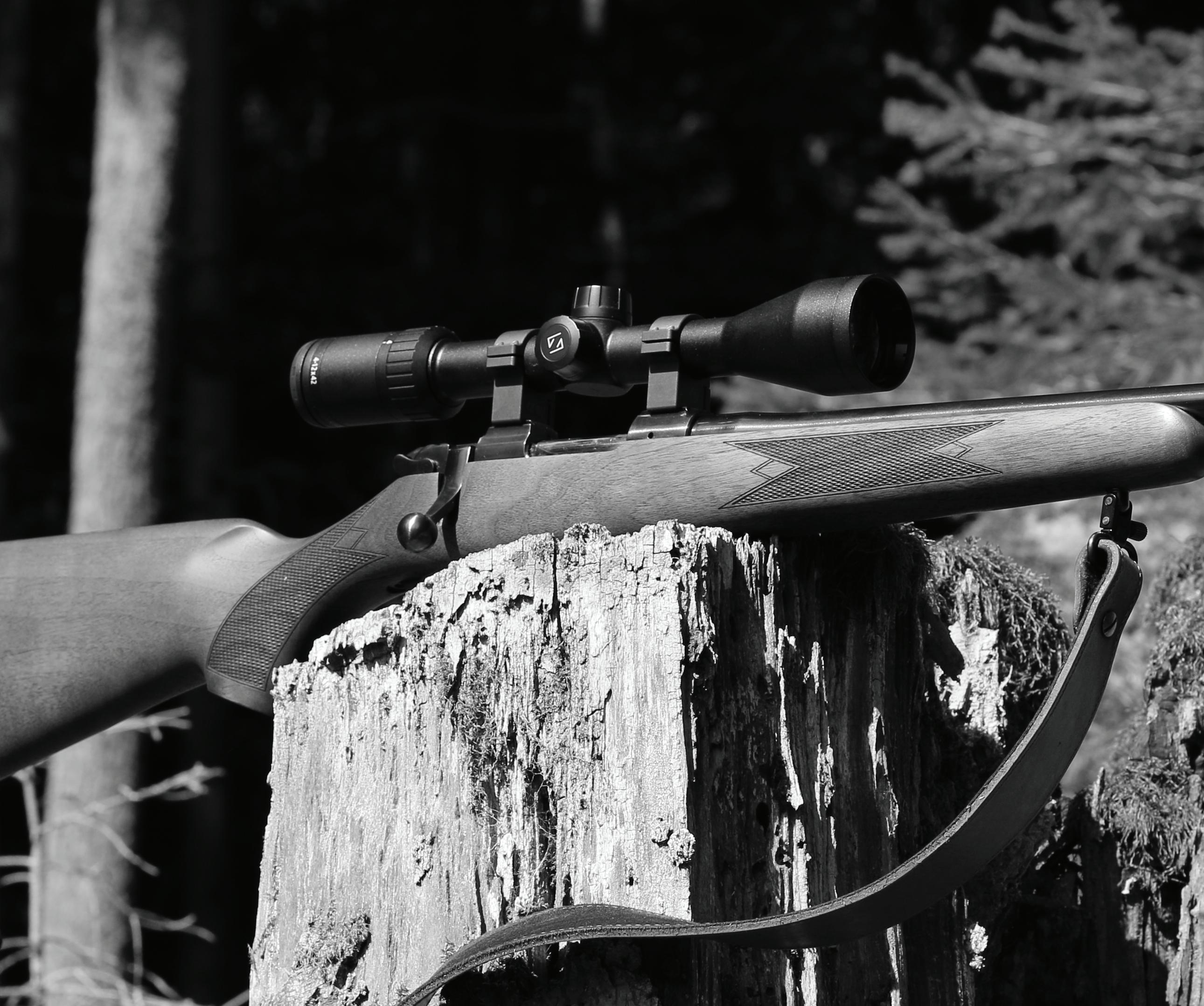

CZ-USA.COM Designed specifically for small-base centerfire calibers, it is a true micro-length Mauser action. With controlled-round feed, a detachable single-stack magazine, a cold-hammer-forged barrel, integral 16mm dovetails and our renowned single set trigger, many people think it’s the ultimate small-caliber platform. OLD SCHOOL CRAFTSMANSHIP
CONTROLLED-ROUND
SINGLE SET TRIGGER COLD-HAMMER-FORGED BARREL TRUE MICRO-LENGTH MAUSER-STYLE ACTION DETACHABLE MAGAZINE CZ 527 AMERICAN
16MM SCOPE DOVETAILS
FEED
Affiliate Organizations
Anglers of Missouri
Association of Missouri
Electric Cooperatives
Bass Slammer Tackle
Burroughs Audubon
Society of Greater Kansas City
Capital City Fly Fishers
Chesterfield Citizens
Committee for the Environment
Columbia Audubon Society
Conservation Foundation of Missouri Charitable Trust
Deer Creek Sportsman Club
Duckhorn Outdoors Adventures
Festus-Crystal City Conservation Club
Forest and Woodland
Association of Missouri
Forest Releaf of Missouri
Friends of Rock Bridge Memorial State Park
Gateway Chapter Trout Unlimited
Greater Ozarks Audubon Society
Greenbelt Land Trust of Mid-Missouri
Greenway Network, Inc.
James River Basin Partnership
L-A-D Foundation
Lake of the Ozarks Watershed Alliance
Land Learning Foundation
Legends of Conservation
Little Blue River Watershed Coalition
Magnificent Missouri
Mid-Missouri Outdoor Dream
Mid-Missouri Trout Unlimited
Midwest Diving Council
Mississippi Valley Duck Hunters Association
Missouri Association of Meat Processors
Missouri Atlatl Association
Missouri B.A.S.S. Nation
Missouri Bird Conservation Initiative
Missouri Birding Society
Missouri Bow Hunters Association
Missouri Caves & Karst Conservancy
Missouri Chapter of the American Fisheries Society
Missouri Chapter of the Wildlife Society
Missouri Coalition for the Environment
Missouri Conservation Agents Association
Missouri Conservation Heritage Foundation
Missouri Conservation Pioneers
Missouri Consulting Foresters Association
Missouri Disabled Sportsmen
Missouri Ducks Unlimited- State Council
Missouri Environmental Education Association
Missouri Forest Products Association
Missouri Grouse Chapter of QUWF
Missouri Hunter Education
Instructor's Association
Missouri Hunting Heritage Federation
Missouri Master NaturalistBoone's Lick Chapter
Missouri Master NaturalistGreat Rivers Chapter
Missouri Master NaturalistHi Lonesome Chapter
Missouri Master NaturalistMiramiguoa Chapter
Missouri Master NaturalistOsage Trails Chapter
Missouri Master NaturalistSpringfield Plateau Chapter
Missouri National Wild Turkey Federation
Missouri Native Seed Association
Missouri Outdoor Communicators
Missouri Park & Recreation Association
Missouri Parks Association
Missouri Prairie Foundation
Missouri River Bird Observatory
Missouri River Relief
Missouri Rock Island Trail, Inc.
Missouri Rural Water Association
Missouri Smallmouth Alliance
Missouri Society of American Foresters
Missouri Soil & Water Conservation Society-Show-Me Chapter
Missouri Sport Shooting Association
Missouri State Campers Association
Missouri State Parks Foundation
Missouri Taxidermist Association
Missouri Trappers Association
Missouri Trout Fishermen's Association
MU Wildlife & Fisheries Science
Graduate Student Organization
Northside Conservation Federation
Open Space Council of the St. Louis Region
Outdoor Skills of America, Inc.
Ozark Chinquapin Foundation
Ozark Fly Fishers, Inc.
Ozark Land Trust
Ozark Riverways Foundation
Ozark Trail Association
Ozark Wilderness Waterways Club
Perry County Sportsman Club
Pomme De Terre Chapter Muskies
Quail & Upland Wildlife Federation, Inc.
Quail Forever & Pheasants Forever
River Bluffs Audubon Society
Rocky Mountain Elk Foundation
South Side Division CFM
Southwest Missouri Fly Fishers
St. Louis Audubon Society
Stream Teams United
Student Air Rifle Program
Tipton Farmers & Sportsman's Club
Tri-Lakes Fly Fishers
Troutbusters of Missouri
United Bow Hunters of Missouri
Watershed Conservation Corps
Wild Bird Rehabilitation
Wild Souls Wildlife Rescue Rehabilitation
Wonders of Wildlife
World Bird Sanctuary
Young Outdoorsmen United
MARCH - 2023 13 Affiliate Highlights
Legends of Conservation

Raising the dead, I think we can do it! Dale Carpentier and Mark Gordon were strangers to me at the time. Before the conversation was over, they enthusiastically agreed to help in any way they could.
America’s Holy Trinity of Conservation, Henry David Thoreau, John Muir, and Aldo Leopold were the first of the recently departed considered for resurrection. We learned that resurrecting someone from the dead wasn’t as tough as we thought. After a little internet search and a couple of phone calls, we found three living, breathing individuals that had taken on the persona of these heroes of conservation. Historical reenactors were anxious to participate in staged performances in Missouri.
The Holy Trinity of Conservation event at the Prairie Star farm in Osage County was the first event of our newly formed not-for-profit, Legends of Conservation. That two-day event in June of 2017 attracted an audience of almost 600 spectators. One event led to another, and in 2018, John Muir returned to the farm with President Theodore Roosevelt. This historic duo set their imaginary stage on Glacier Point in Yosemite Park, reliving the most famous of camping trips. The Tramp and the Rough Rider enjoyed what we now believe to be the camping trip that changed a nation and created the National Park system.
2019 brought Rachel Carson and Ding Darling to life in Missouri. First, Ms. Carson’s one-person play, A Sense of Wonder, quickly brought the audience to tears in a one-night performance at the Etta and Joseph Miller Performing Arts Center in Jefferson City.
Then, Ding Darling, a two-time Pulitzer Prize winner, took his one-person play, The Art of Conservation, on the road. Touring the state in five days, Ding Darling took the stage in five different MDC nature centers in May 2019.
When the tour was over, raising another conservation legend from the grave became a thoughtful challenge. The members of the not-for-profit had grown, Bill White became our liaison with MDC, Connie Willman was our treasurer, Susan Wrasmann our secretary, and Jan Sassmann became the executive voice of reason. Jim Karpowitz was our videographer, Cori Daniels was our Web designer, and Jennifer Sampsell was our first member emerita. Dale and Mark were presidential leaders.
14 CONSERVATION FEDERATION Affiliate Highlights
We wanted to bring more historic conservation heroes back to life, but we had brought the best of those available to the stage. There were others heroes of conservation whose stories needed to be told, but no one living had taken on their persona. Maybe at least we could resurrect those resting conservationists back to life in the form of life-size cardboard cutouts like we have all seen of John Wayne or Elvis Presley. Then into the room walks Sophie Binder, artist and historical interpreter. Sophie created images of twenty of America’s most historic conservation legends. A distinguished list of writers added the voices. A collection of 20 of the most prestigious Legends of Conservation was born.
These life-size cardboard cutouts, or standees, came to life during the pandemic. Their fate was almost instantly sealed, silently waiting to be reintroduced to unknown future gatherings. When the pandemic crisis was over, the Legends of Conservation went on tour about the state and beyond. The Conservation Federation welcomed them to their annual banquet, and the Conservation Heritage Foundation invited them to their Lewis and Clark awards.


The Legends have entertained legislators at the National Assembly of Sportsmen Caucus in Little Rock and the MDC Partners Roundtable Discussions at the White River Conference Center in Springfield. The Ozark Chestnut Foundation honored them at their annual meeting in Roaring River. At the same time, the Legends were the backdrop at all but one of the MDC Conservation and Nature Centers in Missouri.
The next time you’re out and about, maybe you'll walk into a room and realize the most iconic of America’s conservationists have been artistically resurrected from the past. You will be introduced to each one, and if you’re willing to listen, they have amazing stories to tell. Each story from the past is still relevant as we prepare for the challenges and struggles of the future. These “Legends of Conservation” are a watershed of perspectives collectively creating a movement of utmost importance for our survival. They are the foundation for the present and future of conservation.
MARCH - 2023 15 Affiliate Highlights
2023 Events Schedule

87th Annual Convention- February 21 - 26
Let your voice be heard at the Annual Convention. The event will include meetings, awards, auctions, and so much more. Held at the Lake of the Ozarks.
Conservation Day at the Capitol- April 5
Join conservationists from across Missouri on the radio for a day of celebrating and supporting conservation and natural resources. The broadcast will air from 6 am to 10 am on 96.7 FM or KCMQ.com.
Pull for Conservation: Northwest- April 15
Join CFM for the 7th annual Northwest clay shoot at Boot Hill Shooting Ground in Hamilton.
CFM Life Member Event- June 3
CFM will be hosting its 2nd annual life member only event in Rhineland
Conservation Federation Banquet: Columbia- July 13
Fish or kayak then eat a fantastic meal while supporting CFM at Bass Pro Shops in Columbia.
Pull for Conservation: Central- August 12
Take your best shot at the 17th annual Central clay shoot at Prairie Grove Shotgun Sports.
Affiliate Summit- September 7 & 8

CFM affiliate organizations are invited to network and learn with fellow professionals.
Conservation Federation Online Auction- October 11 - 20
Enjoy a fun and interactive online auction with many great trips and prizes
Holiday Online Auction- December 4 - 14
Bid on many exciting items just in the time for the holidays.
Event dates are subject to change. Please visit www.confedmo.org or follow us on social media for the most up to date schedule





Contact your local Shelter agent to insure your auto, home, life, farming, hunting & fishing gear. Find an agent near you at ShelterInsurance.com. Shelter Insurance® is a proud sponsor of Share the Harvest & the Conservation Federation. SEASON It’s Your
Conservation Leadership Corps Travels to Wisconsin for Confluence of Young Conservation Leaders

On October 20th, eight of the Conservation Leadership Corps (CLC) students drove up to beautiful Poynette, Wisconsin for the third Confluence of Young Conservation Leaders (CYCL). Upon arrival, we settled into our rooms at the Mackenzie Environmental Education Center. Following the arrival of the other states and dinner, we listened to a welcome presentation by CYCL coordinator, Molly O’Grady. Then we met via zoom with the founder of Access Ability Wisconsin, Monica Spaeni. Access Ability Wisconsin is a nonprofit organization that rents all-terrain outdoor wheelchairs for the disabled so that they can enjoy the outdoors with loved ones for free. This program allows those with disabilities to be involved in outdoor activities such as hunting, fishing, and hiking. We hope to bring a program like this back to Missouri!
The next day we drove to the Aldo Leopold shack and foundation where we learned more about Aldo Leopold and his family. We were able to tour his property that his family would use as a retreat from their home in Madison. We were shown pictures of the kids growing up at the shack, restoration projects, and even got to sit in the shack!
After the tour, we were able to visit the gift shop, eat lunch, and then we headed off for the International Crane Foundation! Upon arrival at the International Crane Foundation (ICF) we were shown a video explaining current crane conservation efforts and how ICF was founded. Throughout our tour at ICF we were able to visit all 15 wild crane species in the world! We learned how endangered whooping cranes are and the progress made for their re-establishment in the wild. In addition, we learned how severely imprinting can impact a crane.
One of the Gray-crowned Cranes on site was imprinted on as a chick and now thinks she is a human, so she was not afraid of us at all. Following the ICF tour, we visited their gift shop and loaded on the buses to Devil’s Lake State Park.
Devil’s Lake receives thousands of visitors each year and is one of the most popular natural sites in Wisconsin. While at Devil’s Lake, we played on the beach of the lake, hiked, and explored, which was a great chance for us to get to know some of the other students from other states. Some hikes were rockier and involved more climbing while others were more scenic and had millions of tiny yellow sugar maple saplings just waiting to get a glimpse of sunlight to grow.
18 CONSERVATION FEDERATION
News
Member
Youth conservation groups from around the country gathered in front of Aldo Leopold's shack in Baraboo, WI. In addition to CFM's CLC group, there were students from Wisconsin, Texas, and Louisiana. (Photo: Amber Edwards)
Also, while at Devil’s Lake, we had the opportunity to ride one of the all-terrain wheelchairs provided by Access Ability Wisconsin. After taking a quick photo, we loaded up the buses and departed for Mackenzie Environmental Education Center for dinner. For dinner, we got the opportunity to experience a Wisconsin fish fry and try Wisconsin cheese curds! Following dinner, we had free time which included exploring Mackenzie Environmental Education Center, playing cards, or getting to know one another around a bonfire!

The next morning, we departed for the Three Waters Reserve Ecological Restoration Site, where we heard from one of the founders, Steve Apfelbaum. Steve informed us that the site used to be a private country club golf course that now serves as a prairie, wetland, and savanna restoration site. The goal of the site is to return the land to its natural state before it became a golf course.
We discussed financial, ecological, and social issues that the restoration of the site has faced and how they have overcome those issues. We were able to walk around the site from the savanna to the prairie and onto the wetland section. While on our walk, we learned about some of the native flora and fauna of Wisconsin, including little bluestem, Kentucky wild rye, Canada wild rye, white oaks, bee balm, and many more!
Three Waters Reserve features venues for weddings and events, trails with overlooks, and culinary services. Before leaving Three Waters, we had the opportunity to eat lunch provided by Three Waters’s private chef. It was delicious!

That afternoon, we arrived at the University of Wisconsin’s Arboretum, where we spoke with Dr. Karen Oberhauser, who studies monarch butterfly recovery. We began our tour by having a brief discussion in the Visitor's Center about the history and mission of the Arboretum. Dr. Oberhauser informed us that the University of Wisconsin’s Arboretum is the birthplace of Ecological Restoration. The Arboretum hosts many restored land types, including tall grass prairies, savannas, wetlands, a variety of forest types, tree collections, and a lilac collection. We also discussed the issue of racial and cultural diversity in conservation and how to increase diversity in the Arboretum and other workplaces.
Following the discussion, we began our tour of the site by walking through the crab apple collection each with a tag attached to the tree’s binomial name, common name, and family. Then we started our hike into the woods, where we learned about the Arboretum’s many natural springs that connect to Lake Wingra. We also learned about the various sacred mounds on the site and how they are protected. Many of them have been there for hundreds of years!
MARCH - 2023 19 Member News
CLC student Cameron Haeffner testing out one of Access Ability Wisconsin's track wheelchairs at Devils Lake State Park.
(Photo: Cooper Bien)
Crane sculpture at the International Crane Foundation in Baraboo, WI.
(Photo: Cooper Bien)
After our hike through the woods, we walked through several more tree collections, including the conifers which were my personal favorite. We then got a tour through the tall grass prairie portion of the site where we learned about some of the land management taking place. After our tour we loaded the buses and headed back to Mackenzie Environmental Education Center.
After dinner that evening, we participated in a round table discussion where we talked about our takeaways from the weekend and overall thoughts about this year’s CYCL event. The rest of the evening we had free time, which included hiking the various trails of Mackenzie, star gazing, playing cards, or sitting around a bonfire. The following day, we cleaned up Mackenzie and packed up the vans.
But just before we left, we had the opportunity to visit some of the animals that the Mackenzie Environmental Education Center houses on-site including wolves, deer, bison, Ring-necked Pheasants, a Bald Eagle, Turkey Vultures, Barred Owls, Great Horned Owls, foxes, cottontails, Ravens, and Redtailed Hawks. Then we set off to go back home to Missouri.
Throughout our trip, we learned more about other state’s conservation practices, built a network of conservation connections, experienced the landscape, flora and fauna of Wisconsin, and built on leadership and career skills. I highly enjoyed going to CYCL this year and can’t wait to go the next CYCL event!

20 CONSERVATION FEDERATION Member News
Abigail Farris CLC Student
CFM sent eight CLC students to exchange ideas with other like-minded groups at CYCL. (Photo: Amber Edwards)
Committed to Community & Conservation







Owned by the members they serve, Missouri’s electric cooperatives do more than provide reliable and affordable electricity. They are active in their communities, concerned for the wellbeing of their neighbors and devoted to the rural way of life that makes the Show-Me State a special place to live, work and play. Missouri’s electric cooperatives are dedicated to protecting the land, air and water resources important to you and your quality of life. Learn more at www.amec.coop.

8th Annual Conservation Federation Sporting Clays Classic
Saturday, April 15, 2023
Presented by: Northwest Missouri’s Electric Cooperatives
Boot Hill Shooting Ground LLC, Hamilton, MO
Schedule of Events
Registration: 8:00 a.m. - Noon
Shooting: 8:30 a.m. - 1: 00 p.m.
Awards: 1:30 p.m.
Shoot as a Team or Individual
Two Shooter Scramble- 75 targets, $50/team
Additional Rounds- $35/team
Individual Sporting Clays- 50 targets, $40/shooter
Additional Rounds- $25
Prizes for Two Shooter Scramble & Individual Sporting Clays using the Lewis Class System
Challenge shooting games will be held during the event! Lunch and drinks are provided.
Sponsored by: Northwest Electric Power Cooperative


Including: Atchison-Holt, Farmers’, Grundy, North Central Missouri, Platte-Clay, United, and West Central
Register online confedmo.org/events or call (573) 634-2322
Registration also includes a 1-year membership to CFM.


Conservation Day
a t t h e C a p i t o l
A p r i l 5 , 2 0 2 3
7 : 3 0 a . m . - 1 : 0 0 p . m . T h i r d F l o o r R o t u n d a
J o i n c o n s e r v a t i o n i s t s f r o m a c r o s s M i s s o u r i f o r a d a y o f c e l e b r a t i n g a n d s u p p o r t i n g c o n s e r v a t i o n a n d n a t u r a l r e s o u r c e s . L e a r n a b o u t d i v e r s e c o n s e r v a t i o n o r g a n i z a t i o n s a n d h o w w e a l l w o r k t o g e t h e r t o p r o t e c t M i s s o u r i ' s n a t u r a l r e s o u r c e s .
9 6 . 7 K C M Q p a r t n e r s w i t h C F M t o b r i n g
T h e M o r n i n g S h a g , L I V E : 6 : 0 0 a . m . t o 1 0 : 0 0 a . m .

T u n e i n t o 9 6 . 7 F M

F o r m o r e i n f o r m a t i o n , v i s i t : c o n f e d m o . o r g / e v e n t s
Subject to COVID-19 restrictions or cancellation.

MDC inducts “Woody” Bledsoe into Conservation Hall of Fame
The Missouri Department of Conservation (MDC) and Missouri Conservation Commission posthumously honored Herschel “Woody the Singing Forester” Bledsoe, formerly of Jefferson City, by inducting him into the Missouri Conservation Hall of Fame during the Commission’s Dec. 2 open meeting in Jefferson City. Bledsoe died on Nov. 11, 1991, at age 67.
Bledsoe was nominated for the Conservation Hall of Fame by his son-in-law, Jim Dickson, of Jefferson City.
Bledsoe is the 46th inductee into the Missouri Conservation Hall of Fame. The award honors deceased citizen conservationists and former employees of MDC, other conservation-related government agencies, universities, or organizations who have made substantial and lasting contributions to the state’s fisheries, forestry, or wildlife resources. To be eligible, an individual must have performed an outstanding act or demonstrated dedicated service resulting in major progress in conservation in Missouri. Nominations are carefully screened by a diverse committee and their recommendations are presented to the Conservation Commission for consideration and final approval. Learn more at mdc.mo.gov/about-us/awards-honors/hall-fame.
Bledsoe began his career with MDC in 1942 as a towerman and firefighter. He served in the MDC Forestry division in several capacities before being promoted to a new assignment in 1951 where he traveled the state promoting forestry conservation. He took a “mobile motion picture unit” to rural schools throughout the state to show conservation films and lecture on wildlife and forestry conservation. He would entertain his audiences by playing his guitar and singing ballads to emphasize the conservation philosophy and movement in Missouri.
In 1953, Bledsoe formed a country music band with other MDC staff and produced a pilot radio show called "Woody and the Ozark Smoke Eaters."

“Although the show was high in entertainment content, Woody used it to preach the dangers of forest fires and to sell good wildlife and forestry practices,” explained MDC Director Sara Parker Pauley. “The pilot show was presented to MDC administration and they were so impressed they had him produce the show for use on about 25 radio stations throughout the state as a public service. The show was an immediate success and evoked good responses from the public and radio stations.
Thus, ‘Woody the Singing Forester’ was born.”
In 1954 Bledsoe was promoted to Radio-TV Specialist in Jefferson City and placed in charge of radio and television productions for MDC.
Bledsoe was placed in charge of MDC exhibits in 1957 where he became the voice of Smokey Bear in Missouri and made hundreds of personal appearances with an animated Smokey at county fairs throughout the state. He also became a much sought-after speaker for civic organizations and sportsmen’s clubs and presented at hundreds of school assembly programs around the state.
Bledsoe began producing and hosting a 30-minute television show for MDC called "Missouri Outdoors" in the early sixties. The popular show aired until 2007 with episodes still available online.
“Woody's radio show, TV show, exhibits, and publications won 20 international awards from the Association for Conservation Information,” said Pauley. “This association is comprised of information and education sections of state, federal, and provincial conservation agencies throughout the United States and Canada. These are prestigious awards and Woody's productions placed first, second, and third consistently, which not only reflects well on his ability, but has been a contributing factor in making the Missouri Department of Conservation recognized as one of the best in the nation.”
Listen to the “Singing Forester” through an MDC vintage video circa 1960 at youtube.com/watch?v=uQpq9wUUZAc.
24 CONSERVATION FEDERATION Outdoor News
LEGISLATIVE ACTION CENTER
Act fast on issues that matter to you.

S T A Y I N F O R M E D . S I G N U P T O D A Y
V I S I T W W W . C O N F E D M O . O R G / L A C
C L I C K " S I G N - U P "
"Be The Voice For Missouri Outdoors"
Road trip. We didn’t choose the perfect playlist. Or program the GPS. But we did fuel the car that made you realize there are no wrong turns, only new adventures. When the energy you invest in life meets the energy we fuel it with, amazing journeys happen.


26 CONSERVATION FEDERATION
CLARITY EQUALS CONFIDENCE































MARCH - 2023 27 Available in 9 configurations in exposed or capped turrets. Engage, the newest line of optics from Bushnell, gives you optimized clarity on the hunt or on the range. Best-in-class glass with Bushnell’s EXOTM Barrier offers unmatched performance in any situation, and toolless locking turrets secure your zero at any distance so you have the advantage no matter the target. Don’t just look; engage with the best name in optics. GET BEHIND THE GLASS AT BUSHNELL.COM/ENGAGE
BNL6276_Engage_Clarity_Digital_7.25x4.35.indd 1 8/4/17 4:28 PM
Deer Hides
Iwas driving through Lake Ozark when I noticed a sign for a black powder rendezvous. At the time, I was a member of the Howard’s Bluff Militia, a Jefferson City black power shooting club. I pulled into the rendezvous because I was curious. Much to my surprise there were many boy scouts attending and I learned that several of the black powder rendezvouses in Missouri host boy scout troops. I had just become the new scoutmaster of the troop in California, MO, and I was looking for different camping trip ideas.
In the fall, I took the troop to a black powder rendezvous in west central Missouri. The scouts got to shoot muzzleloading rifles, throw knives and hatchets, and participate in other activities.

In the evening, there was a contest to select the troop and individual scouts with the best mountain man costume. I was unaware of this competition, so the scouts were not prepared to participate, but I immediately recognized the potential for making mountain man outfits out of deer hides that would be much better than any outfit at this competition. More importantly, tanning deer hides and making clothing would take up dozens of scout meetings.
I put a notice on the bulletin board at work during the deer season asking for deer hides for the scouts, which was a huge mistake. I was inundated with raw deer hides. People dropped them off anonymously on the porch of the house.
28 CONSERVATION FEDERATION Feature Story
Soon I had enough deer hides to cover the backyard. I salted and rolled them up for storage in the chest freeze over Mrs. Urich’s strong and vocal objections. Apparently, some wives don’t like the freezer packed with deer hides, especially if they are aromatic.
The first step in the tanning process was to scrape the remaining flesh off the hides. The scouts tacked the hides to sheets of plywood. One of the scout dads made scrapers out of 1-inch wide by 18-inch long metal strips with one end bent 120 degrees and sharpened. It took a long time to scrape a deer hide, and the hides were salted and rolled up between scout meetings.


The next step was tanning the hides, a process that I didn’t know anything about, plus the Internet was new and there was no YouTube. Consequently, I had to go to the library and actually read books. The native Americans used deer brains as the active preservation ingredient, but it is hard to come up with enough brains for dozens of hides. A more practical alternative was water, hydrated lime powder and wood ashes which removed the hair. First, the hides were rinsed in a mild boric acid solution to neutralize the lime. Then the hides were tanned in water with alum and salt. All of this was done in large plastic garbage cans. After the hides came out of the tanning solution, they were rinsed and tacked to plywood to dry.
The dried hides had the consistency of thick cardboard and had to be softened. Nyla, the Smiling One, wife of Nanook of the North and the other Inuk women chewed the hides until they were soft. But this process is hard on the teeth and probably doesn’t taste very good. I knew the scouts would not want to spend hours chewing their deer hides. Alternatively, the scouts rubbed the hides over the ends of tables and sawhorses, but they still were not pliable enough to make clothing. The solution was to tumble the hides in a drier without the heat and with old tennis shoes or wooden blocks covered with cloth. Unfortunately, no scout mother would allow a grungy deer hide near the dryer.
(Left) David Urich with handmade authentic looking clothing from the early 1800s including blanket coat all made lovingly by Mrs. Urich. (Photo: David Urich) (Top) Scouts stretching a scraped and tanned deer hide to plywood to dry. (Photo: David Urich)
MARCH - 2023 29 Feature Story
Scouts scraping the flesh from raw deer hides using homemade scrapers with the hides fastened to plywood. (Photo: David Urich)
I took all the deer hides home on a day Mrs. Urich was gone and processed them in our dryer. In this case, it was obviously much better to beg for forgiveness than seek permission because she was still chafing from having the chest freezer packed with smelly deer hides for months. Besides, I did an excellent job of cleaning and sanitizing the dryer drum but, unfortunately, I forgot about the lint filter.
Several days later, Mrs. Urich was standing in front of me with a serious frown on her face holding the lint filter. It was choked with deer hair. She told me never to put a deer hide in her dryer again. I thought the dryer was half mine, but apparently, the household appliances only become half mine when they break and require repair.
Almost two years later, Mrs. Urich was standing in front of me again, scowling and holding a perfectly clean drier lint filter. As I began weaseling out of another uncomfortable marital situation, she cut me off saying there were two things I had never done during the course of our marriage.
The first was cleaning the bathroom, and the second was clean the drier lint filter unless I was up to something. This was my final warning but she suggested I process the deer hides at a laundromat. Actually, this was an excellent suggestion and I was shocked that I hadn’t thought of it myself because it would have prevented almost two years of bickering over the dryer. I located a commercial dryer with a huge tub which allowed me to process deer hides much more quickly.
The final steps in the softening process were sanding the flesh side of the hide with fine-grain sandpaper and rubbing the hide sparingly with neat’s-foot oil. With the hides softened up, the scouts could make a vest, possibles bag, belt pouch or moccasins. Many of the scouts made all four. I had artificial sinew which was thick nylon thread covered with a brown waxy coating. The scouts had difficulty pushing a needle threw the hides. I solved this problem with electric drills and small drill bits, which I bought by the dozens because the scouts kept breaking them.

I taught the scouts how to seed bead designs on cloth and then apply the cloth to their deer hide clothing. They finished up by adding plastic eagle claws, bear claws, small jingles and other decorations. Some of the older scouts were very good at seed beading.

30 CONSERVATION FEDERATION Feature Story
Scout competing in the hatchet throwing contest wearing a vest made from a deer hide and modified hat purchases at a garage sale. (Photo: David Urich)
At a farm sale, I bought a box filled with raw cow horns. I showed the scouts how to make powder horns by smoothing the exterior of the horns and carving wood caps for both ends. They braided straps from strips of deer hide. I also asked the scouts to scour garage sales for hats even women’s hats which they converted to hats that looked like what a mountain man would wear.
The troop took first place in the mountain man costume competition at the next rendezvous. Three of the scouts took first through third place in the individual competition. It wasn’t even close. Then the scouts asked me why I didn’t compete in the adult leader mountain man costume competition, which was a good question.
Mrs. Urich insisted on several conditions before she accepted my sincere proposal of marriage including never asking her to do any sewing for me. As a matter of fact, she could tell if I was thinking about asking her by peering into my eyes. Accordingly, I was totally shocked when she volunteered to sew button-down pants and a pull over shirt. I applied seed bead designs directly to the shirt. I was very authentic looking with a powder horn, possibles bag, moccasins and a hat made from a bowler.
I took second place at my first adult leader mountain man costume contest. Another scout leader had a complete leather outfit including vest, pants and coat all with fringe and seed beading directly on the leather which is hard to do. He looked like a mountain man who had just descended from the Rockies with a load of beaver pelts. After some discussion, both Mrs. Urich and I agreed that making a full leather outfit to be more competitive was too much work. Second place at future events would be good enough despite our middle son announcing that second place was actually the first loser.
Several years later, I located a supply of colorful blankets with different plaid designs. The scouts made vests, capes, pouches and other items out of these blankets. Mrs. Urich even got out her sewing machine a second time on my behalf and helped me make a full-length overcoat out of a red and white blanket. With my trousers, shirt, blanket coat and other accessories, I was stunning and very authentic looking, but I still took second place.
During my 13 years as a scout leader, I helped the scouts tan hides every 2 to 3 years, depending on how much material was needed for new scouts to make costumes. Some of the scouts who had tanned hides before elected to use a hair-on tanning technique and supplemented their costumes with capes and hats made with hair-on deer leather. When I think back on my years as a scout leader, some of the best memories were teaching the scouts to tan deer hides, helping them make authentic looking outfits, sparing with Mrs. Urich over the clothes dryer, watching the scouts clobber the competition in the costume competitions, and repeatedly being the first loser in the adult leader mountain man costume contests.
 David Urich
David Urich
MARCH - 2023 31
Feature
(Left) Scouts making belt pouches from tanned deer hides. (Photo: David Urich) (Top) Scouts making moccasins from tanned deer hide leather. (Photo: David Urich)
Story
Dunn Ranch Prairie

Preserving a Part of Missouri’s Past with Plans for the Future
Prior to westward expansion, Missouri’s northern prairie region was a land teeming with wildlife. Large herds of bison roamed the vast grasslands, and Native American tribes followed the herds to obtain the food and shelter they needed to exist in the often-harsh conditions of the plains.
As settlers moved west, the prairies were turned under by the plow and planted in grasses and crops to provide food for the pioneers and grasses for grazing their cattle. Because of the loss of habitat and constant pressure from those moving west, Bison and other plains animals were pushed out of Missouri.
32 CONSERVATION FEDERATION Feature Story
When the Dunn family homesteaded in northern Missouri 150 years ago, the land was miles of virgin bluestem and switchgrass — a sea of grass as far as the eye could see. As time went on, the original 15 million acres of Missouri grasslands diminished to the point that by the mid-1900’s, only a remnant remained.
In 1999 The Nature Conservancy was able to purchase 2281 acres from descendants of the Dunn family to preserve over 1000 acres of original prairie ground that had never been plowed, as well as start restoration on the rest of the property to bring back as much of the natural habitat as possible. Currently, the ranch stands at 3258 acres after additional acquisitions.
Through plantings of native grasses and prescribed burns, invasive grasses and plants are being eliminated. The prairie is home to over 200 native grasses, as well as numerous species of birds and other wildlife, including the prairie chicken, which is staging a strong comeback in the region. Dunn Ranch is also home to a population of the federally endangered Topeka Shiner. Efforts to improve habitat and provide protection for the species are ongoing.

In 2011, bison were introduced. Bison behaviors, such as wallowing, tree horning and roaming while grazing, increases diversity in grassland species – while their grazing patterns and the way they trample the ground provides varying habitats for wildlife and nesting birds.

In addition to efforts on the ranch, The Nature Conservancy works with local farmers and ranchers who want to improve the habitat on their property by seeding native plants, controlling invasive species and improving timber stands. “We want the area landowners to look at us as partners,” said Agriculture Strategy Manager Kent Wamsley. “We currently also have two pastures consisting of 400 acres of predominately native grasses. Ranchers who participate in conservation work on their properties can apply to graze this land while waiting for their own native grasses to become established.
Dunn Ranch Prairie is located in Northwest Missouri near the town of Hatfield and is open to the public year-round. “We want the facilities to be accessible and interactive,” said Wamsley. “We have added ADAaccessible parking, electric vehicle charging stations, improved signage and better walking trails. There are also elevated viewing platforms that give great views of the prairie and its abundant wildlife.”
For more information on Dunn Ranch Prairie and The Nature Conservancy in Missouri, visit www.nature.org/ missouri. To reach the Dunn Ranch directly, call 660-8673866 or email them at missouri@tnc.org.
MARCH - 2023

33
Feature Story
(Left) Prairie in Bloom (Photo: Dunn Ranch Prairie) (Top) Prairie Chickens (Photo: Dunn Ranch Prairie) (Middle) Bison (Photo: Dunn Ranch Prairie) (Bottom) Monarch Butterflies (Photo: Dunn Ranch Prairie)
Mike Capps
Turkey Tips for Tough Times
Turkey hunting is a challenging pursuit. As turkey numbers have faltered across the country, many hunters find the challenge of tagging a tom to be increasingly difficult. Although turkey numbers are down in our beloved Show-Me state, there is still a strong population of birds for spring gobbler chasers to hunt. It’s great when toms gobble at our every call and come running to the sweet sounds of that hen in the bush. However, in tough times turkey hunters have to work harder and smarter to find and outwit a wary old gobbler.

Scouting becomes more important to a turkey hunter if numbers are down in your area. Turkeys are still wild creatures with the same basic needs they have always had…food, water, and cover. Determining the best food sources in your given hunting area is key to finding birds. Find a good food source with water within a quarter mile and suitable roosting trees nearby and you have a good chance of finding turkeys. Remember, however, that matters have changed since the heydays of the 1980s. You now may have to scout several “perfect” spots to find birds.
Once you locate a flock of birds, don’t push your luck and scout too much. Pushing birds off of a property is not a good thing but is not necessarily the end of the world. If the food source is substantial, the birds will return, if they are not pressured.
Locator calls are often the undoing of wild gobblers. Once you jerk a gobble from a tom, close the distance and use your locator call once again, but don’t overdo it. You have awakened a gobbler and it will be on full alert. I have great success using a coyote howler. Turkeys hate coyotes and will readily gobble at coyote howlers.
34 CONSERVATION FEDERATION
Feature Story
On several occasions, I have witnessed turkeys gobbling at coyotes they can see. On one occasion, I laughed aloud as four big toms gobbled non-stop while chasing a big, male coyote from their strutting field. And, I have actually howled at gobblers in my line of sight and had them gobble. If it is a band of birds, they may approach. However, if it is a lone gobbler, don’t count on it coming any closer.
A million different scenarios may occur on any given morning of turkey hunting. That is precisely what makes it so challenging. One of the most common problems I hear voiced from turkey hunters is the fact that a bird gobbled on the roost and then flew the other way. That’s a bummer. You did not necessarily frighten the bird. Most likely, there were hens roosting in the other direction. The gobbler most likely saw them fly down and it simply hopped off the roost to join them. Hens in sight of a lovesick gobbler are hard to beat. If you hear the tom gobbling and going away, your best bet is to make a wide circle and get in front of the group. Later in the morning, that gobbler will be easier to call as hens lose interest in it.
What if a tom calls at your every call? It is definitely interested. However, the gobbler expects the hen to come to him. Keep calling and the tom is most likely to hold its position while watching for the hen to approach. In most scenarios, you can quit calling and the gobbler will approach your position, because it is afraid the hen is leaving. Silence is often golden in this situation, because the gobbler is on its way. Stay put for at least an hour. Approaching toms may take their time. Often they feed along the way. Should you hear another hen calling, call again. You may be in for a calling competition to win the gobbler.
Henned-up gobblers often discourage hunters, and rightfully so. However, everything is not lost. Some of my most memorable turkey hunts involved boss hens that were bent on running off competing hens. Loud, raucous calling is often the ticket to bring those hens with the gobbler in tow.

Every day in the turkey woods is different. A call that toms love today, they may ignore tomorrow. Carry a variety of calls, including box calls, slate and glass pot calls, and mouth calls. I carry several mouth calls with various reed patterns that cover a wide range of sounds. On occasions, I’ve had success by running a pot call and a mouth call simultaneously.
My favorite turkey hunting scenario is often selfconstructed. I roost birds the evening before and close in to within 75 yards the following morning. Stealth is the name of the game. You will occasionally get busted. However, once you close the distance sit quietly and listen. You may first hear the sounds of feathers raking on tree limbs as birds begin to wake up. I enjoy waking the birds by floating very soft tree yelps in their direction. Often I can determine how many birds are on the roost. I always hope that there are no hens between me and the closest gobbler.
Last season I had this very scenario working for me. After I heard the first hen yelp, I caught movement in a sprawling white oak less than 75 yards away. Two mature gobblers stretched three wings and gobbled in unison. I suspected them to drop from their perch and eat my way. I yelped softly only once to let them know a hen was around.
At the last moment, a hen yelped slightly downhill. I heard her fly down. The gobblers followed. I called, but watched as the small flock headed down the hill. Desperate, I began a 30-yard low crawl to a big brush pile between the birds and me. Shock swept over me when I peeked through the brush to see a third gobbler and two hens walking straight at me.
It would have to be a quick shot. The majestic gobbler stood 9 yards away. In one fluid movement, I rose to one knee, shouldered my shotgun, snagged my sling on a stick and missed. Oh, the greatest laid plans of mice and men.
Bill Cooper
MARCH - 2023 35 Feature Story
(Left) In this era of fewer turkeys, hunting harder and smarter is necessary. (Photo: Bill Cooper) (Top) Gobblers surrounded by hens are difficult targets. Challenging the boss hen is often the best way to call the flock to your position. (Photo: Bill Cooper)
MISSOURI DEPARTMENT OF CONSERVATION

MDC Sets Deer and Turkey Hunting Dates and Proposed Deer Regulation Changes for 2023-2024 Seasons
The Missouri Department of Conservation (MDC) recently set turkey and deer hunting dates for the 2023-2024 seasons along with regulation changes for the 2023-2024 deer-hunting season. The regulation changes include a new firearms early antlerless portion, a new firearms CWD portion, and changes to firearms antlerless permit numbers in most counties. The hunting dates and regulation changes were approved by the Missouri Conservation Commission at its Dec. 2 open meeting in Jefferson City.
“The changes to deer hunting regulations for the 2023-2024 deer season were motivated by increasing deer numbers throughout much of Missouri and in response to changes in the distribution of chronic wasting disease (CWD) in the state,” said MDC Cervid Program Supervisor Jason Isabelle. “With a growing deer population in most Missouri counties, we’re increasing opportunities for hunters to harvest deer both within and outside of the CWD Management Zone next year.”
2023-2024 Hunting Dates
2023 Spring and Fall Turkey Hunting Dates
• Spring Youth Portion: April 1 - 2
• Regular Spring Turkey Season: April 17 - May 7
• Fall Firearms Turkey Season: Oct. 1 - 31
2023 – 2024 Archery Deer and Turkey Hunting Dates
• Sept. 15 through Nov. 10 and Nov. 22 - Jan. 15, 2024
2023 - 2024 Firearms Deer Hunting Dates
• New! Firearms Early Antlerless Portion: Oct. 6-8 (in open counties)
• Firearms Early Youth Portion: Oct. 28-29
• Firearms November Portion: Nov. 11-21
• New! Firearms CWD Portion: Nov. 22-26 (in open counties)
• Firearms Late Youth Portion: Nov. 24-26
• Firearms Late Antlerless Portion: Dec. 2-10 (in open counties)
• Firearms Alternative Methods Portion: Dec. 23Jan. 2, 2024
New Firearms
Early Antlerless Portion Oct. 6-8
MDC will offer a new firearms early antlerless portion Oct. 6-8 for 2023 in the same 100 counties open for the firearms late antlerless portion Dec. 2-10. Get regulation details and a map of open counties from the MDC website at mdc.mo.gov/hunting-trapping/species/deer/ regulation-changes-2023-24-deer-season
“With deer populations being at desired levels in most counties but continuing to increase, additional antlerless harvest is needed to stabilize deer numbers,” said Isabelle. “The creation of an early antlerless portion of firearms deer season and increasing the availability of antlerless permits in most counties will provide hunters with more opportunities to harvest antlerless deer and help meet our deer-management goals.”
According to MDC, firearms antlerless seasons that occur prior to the primary firearms season are not uncommon and several Midwestern states have established similar season portions.
“The early antlerless portion will help to increase antlerless deer harvest prior to the November portion of firearms season when the focus of many hunters is on harvesting a buck,” said Isabelle. “The timing of the early antlerless portion was designed to occur when weather conditions are generally comfortable and during a time that will minimize conflict with archery hunters, who spend the most time hunting during late October and early November as the rut approaches.”
36 CONSERVATION FEDERATION Agency News
New Firearms CWD Portion Nov. 22-26
MDC will offer a CWD portion of firearms deer season Nov. 22-26 in CWD Management Zone counties during the 2023-2024 deer season. Get regulation details and a map of open counties from the MDC website at mdc. mo.gov/hunting-trapping/species/deer/regulation-changes2023-24-deer-season
According to MDC, hunters will be able to use any unfilled firearms deer permits during the CWD portion and must abide by the statewide limit of one antlered deer during the firearms deer season, all portions combined. They must also abide by county-specific firearms antlerless permit numbers.
“Like they are in most of the state, deer populations are increasing in most CWD Management Zone counties,” said Isabelle. “Because higher deer densities can increase the rate of CWD spread, additional deer harvest in the CWD Management Zone is needed to prevent further increases in deer numbers and help minimize the spread of the disease.”
He added that the timeframe of the CWD portion was selected because it occurs during the tail end of the primary rut, or breeding season, when deer activity is typically high and when hunter interest remains strong.

“When looking for the best time to provide hunters with more opportunity in CWD Management Zone counties, we considered a number of factors including the potential for good deer movement, level of hunter interest, and potential conflict with other hunters,” said Isabelle. “The late November timeframe avoids peak archery hunting weeks and occurs during a time when deer movement is generally good, and when hunters are eager to be in the woods.”
Changes to Firearms Antlerless Permit Numbers
MDC has also increased the number of firearms antlerless permits hunters can fill in most counties, including allowing hunters to fill a firearms antlerless permit in Butler, Carter, Scott, and Wayne counties. MDC has also increased the number of firearms antlerless permits from two to four in 82 counties.
“Prior to 2014, firearms antlerless permit numbers were unlimited in 74 counties,” said Isabelle. “However, following the severe hemorrhagic disease outbreak that occurred throughout much of the state in 2012, we became much more conservative with firearms antlerless permit numbers to allow the deer population to rebound.”
He noted the deer population has steadily increased during the last decade, necessitating the liberalization of antlerless harvest opportunities to slow population growth and keep the deer population at desired levels. Get regulation details and a list and map of allowed antlerless permit numbers by county from the MDC website at mdc.mo.gov/hunting-trapping/species/deer/ regulation-changes-2023-24-deer-season
Detailed information on the new firearms early antlerless portion, the new firearms CWD portion, and changes to firearms antlerless permit numbers by county will also be included in the MDC 2023 Fall Deer & Turkey Regulations and Information booklet, available starting in July where permits are sold and online at mdc.mo.gov.
MARCH - 2023 37 Agency News
MISSOURI STATE PARKS
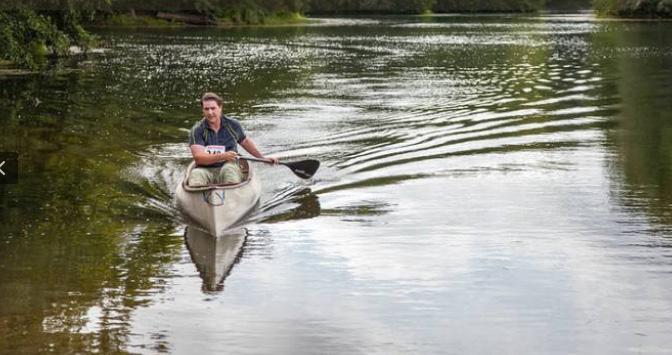
Conceptual Development Plans Guide Our Parks and Sites
Conceptual development plans, or CDPs, are an integral part of Missouri state parks. They are used at new and existing state parks and historic sites to guide their future uses and development while supporting the mission, purpose and direction of each facility.

“CDPs outline area use for zoning, site goals, development objectives, research needs and project phasing…all while taking into consideration those natural, cultural and recreational resources onsite, as well as public input,” said Ryan Dunwoody, planning section chief with Missouri State Parks. “Each CDP update entails collecting and reviewing relevant information, facilitating public engagement and drafting formal planning documents. We try to touch on every single aspect of what the land is, what the park will be and what we’re trying to make it.”
So, how exactly does a CDP work, and how does it affect the average park visitor? Every park and historic site follows a CDP that is updated every 15 years.
Creating or updating a CDP follows a structured process, comprised of five phases including data gathering, drafting, public feedback, finalizing the plan and implementation.
When a CDP is needed, a team of resource professionals and subject matter experts is assembled. Once this is determined, an onsite team meeting takes place and public surveys are posted online. Data gathering occurs, where site information obtained and public input is analyzed.
While the CDP is written or revised, the facility’s preamble and mission statement are reviewed, too. The preamble sets the stage for the mission statement by providing guiding principles and establishing a narrative on the history and significance of the park or historic site. The mission statement gives long-term facility direction dictated by the significant natural, cultural and recreational resources onsite.
Using the information gathered, the team drafts a CDP, along with a preamble and mission statement. To help narrow the focus of the CDP, additional public input on the proposed development objectives is encouraged, both through online surveys, as well as public meetings.
38 CONSERVATION FEDERATION Agency News
After analyzing public feedback, the CDP is finalized, published and then eventually implemented. While the goal is to have a CDP implemented in 12-19 months, the timeline is dependent on numerous factors, including facility complexity, scheduling with internal and external stakeholders, data collection and CDP team consensus, Dunwoody said.
The team takes into account what the public wants, as was seen in Shepherd of the Hills State Park CDP. The park was previously named Ozark Mountain State Park, but due to public requests and overwhelming support, the name was changed.



CDPs in process
The CDP for Bryant Creek State Park culminated in the opening of the park to the public on Sept. 23, 2022. Shepherd of the Hills State Park just wrapped the CDP process which was used to develop a funding request for the first phase of development. CDP updates in progress include Ha Ha Tonka, Elephant Rocks and Finger Lakes state parks and Scott Joplin House and General John J. Pershing Boyhood Home state historic sites.
For more information on the CDP process, visit our website at https://mostateparks.com/page/90071/ conceptual-development-plans .
MARCH - 2023 39 Agency News
All photos courtesy of Missouri State Parks.




40 CONSERVATION FEDERATION Get healthy in nature this year. mdc.mo.gov/places–go Healthy is NATURE


MARCH - 2023 41
Missouri Deer Hunter’s Bible


These rules are intended to be studied closely and observed religiously. Read each rule by pausing for a few seconds of reflection at each comma and period in order to fully absorb what you’ve just read. Repeat each of the lessons in this manner about ten times before moving on to the next lesson, and be sure that you are confident that the correct shoot or don’t shoot decision will be automatic for you while actually hunting.
These lessons should be tackled only after you have practiced firing your weapon at inanimate targets until you are proficient at operating the weapon, judging distance, and hitting the targets. When carrying a gun, do not chamber a round until you are settled in the spot from which you plan to shoot, and whether there is a live round in the chamber or not, frequently check to assure that the safety is on.
When not actually holding your gun, be sure it is completely unloaded. When carrying a bow, do not nock an arrow until you are in the position from which you plan to shoot, and do not attach your release to the bow string or draw until you are ready to shoot. Observe all other weapon safety practices. These are lessons about actual hunting, specifically making the shoot or don’t shoot decision.
Lesson One: Common Sounds
1. If it sounds like a deer, it’s a squirrel. Don’t shoot.
2. If it sounds like a possum, it’s a squirrel. Don’t shoot.
3. If it sounds like a raccoon, it’s a squirrel. Don’t shoot.
4. If it sounds like a rabbit, it’s a squirrel. Don’t shoot.
5. If it sounds like a groundhog, it’s a squirrel. Don’t shoot.
6. If it sounds like a coyote, it’s a squirrel. Don’t shoot.
7. If it sounds like a fox, it’s a squirrel. Don’t shoot.
8. If it sounds like a turkey, it’s a squirrel. Don’t shoot.
9. If it sounds like an armadillo, it’s a squirrel. Don’t shoot.

42 CONSERVATION FEDERATION Feature Story
10. If it sounds like a goat, it’s a squirrel. Don’t shoot.
11. If it sounds like a chicken, it’s a squirrel. Don’t shoot.
12. If it sounds like a rusty hinge, it’s a squirrel. Don’t shoot.
13. If it sounds like a squirrel, it’s a squirrel. Don’t shoot.
14. If it sounds like a squirrel but isn’t, it’s just the wind in the leaves. Don’t shoot.
Lesson Two: Less Common Sounds
15. If it sounds like a box turtle, it might be one or maybe two box turtles. Don’t shoot.
16. If it sounds like a goose, it might be a goose. Don’t shoot.
17. If it sounds like a wood duck, it might be a wood duck. Don’t shoot.
18. If it sounds like Ringo Starr, it might be a woodpecker. Don’t shoot.
19. If it sounds like a hawk, it might be a hawk. Don’t shoot.
20. If it sounds like an owl, it might be an owl. Don’t shoot.
21. If it sounds like a party, it might be two barred owls. Don’t shoot.
22. If it sounds like an eagle, it might be an eagle. Don’t shoot.
23. If it sounds like a screaming alto, it might be a mountain lion. Don’t shoot.
24. If it sounds like a screaming soprano, it might be a bobcat or a groundhog. Don’t shoot.
25. If it sounds like Jack Nicholson laughing, it might be a pileated woodpecker. Don’t shoot.
26. If it sounds like a Middle School orchestra and choir warming up simultaneously, it might be a pack of coyotes. Don’t shoot.
27. If it sounds like a Huey helicopter, it might be a turkey. Don’t shoot.
28. If it sounds like a quail, it might be a quail, but probably not. Don’t shoot.
29. If it sounds like a grenade going off, it might be a covey of quail flushing. Don’t shoot.
30. If it sounds like a bunch of squirrels, but they are flying, it’s a flock of blackbirds. Don’t shoot.
31. If it sounds like Mr. Creosote from Monty Python’s The Meaning of Life, it might be a feral hog. Don’t shoot.
32. If it sounds like children sword-fighting with wooden or plastic swords, it might be two deer sparring. Don’t shoot.
33. If it sounds like a fat basso profundo wanting or appreciating sex, it might be a deer. Don’t shoot.
34. If it sounds like a shovel scooping gravel, it might be an alarmed deer about to run. Don’t shoot.
Lesson Three: Sights
35. If you detect motion with your peripheral vision, it’s a squirrel, or it’s a bird, or it’s a floater in your eye. Don’t shoot.
36. If it is wearing anything orange or red, it might be a person. Don’t shoot.
37. If it is wearing any clothing at all, it might be a person. Don’t shoot.
38. If it looks like a Brobdingnagian rabbit wearing clothes, it’s a squirrely Easter Bunny. Don’t shoot.
39. If it looks like a drab, mostly brown Tiny Tim or Bigfoot tiptoeing through leaves quietly, it might be a deer. Don’t shoot.
40. If it looks deer-sized, is deer-colored, has four legs, and is walking sounding like a squirrel, it might be a deer. Don’t shoot.
41. If it sounds like a squirrel or a fat basso profundo or a shovel scooping gravel, has four legs, tiptoes like Tiny Tim, isn’t wearing any clothes, is deer-sized and deercolored, if you are certain that it’s a deer and that it is within your weapon’s effective range, if it is standing still broadside, if deer season for your weapon is open, if you are certain that you have an unfilled permit for the kind of deer you are looking at, if you are certain that that kind of deer is legal where you are hunting remembering antler-point rules and all other rules, if both you and the deer are on property that you are legally allowed to hunt, if you don’t have branches or trunks or stumps or wires or people or animals between you and the deer, if you are able to hold your sights still on the deer aiming just behind the shoulder and make any necessary adjustment for distance, for wind, and for up or down shooting angle (aim higher if shooting upward, lower if shooting downward), if you can see ground and no sky behind the deer, if you know that there are no buildings, vehicles, people, or other animals behind the deer, and if you have the resources to do the retrieval, field dressing, butchering, packaging, and freezing, release the gun’s safety or draw the bow. Think about all of these things one more time, then gently squeeze the trigger or release the arrow. Shoot.
Bill Powell
All photos courtesy of Bill Powell.
Feature Story MARCH - 2023 43
Bill
is an attorney, writer, and photographer, with hobbies including hunting, fishing, mountaineering, backpacking, travel, reading, running, growing grapes, making wine, gardening, cooking, woodworking, and building. He lives and hunts deer in Boone County. He was the subject of a recent article in this publication titled “Ship of Fools." This article is an attempt by Powell to reclaim a reputation for not being a Fool, but the reader will judge its success or failure.
The Old Oak Tree

For over 50 years, an old oak tree stood near the corner of our house. It was no ordinary tree. Two oak trees had grown together at the trunk many years ago. It was massive in circumference and stood over 80 feet tall. The shade over our house and the oxygen it produced were invaluable to us. The fall colors of that tree added beauty to our yard.
Six other oaks are in the backyard. Two other oak trees are in front of the house. All are big, all our old, but none as old or as big as the old oak tree. The giant stood out among the other oaks, the maple trees, the redbuds, the buckeye, the dogwoods, and the spruce trees.
The giant old oak was always home to the birds. They built their nests, raised their babies, and sang their songs. The squirrels enjoyed the acorns it produced and also built nests in it. Gathering up all the leaves every fall was a chore. Picking up small limbs that fell in our yard and driveway was a pain. My wife and I both loved that old oak tree.
One year I made a birdhouse. I painted it white and then put a Wisconsin red “W”on it. It hung on the side of the tree where we could see it every time we drove up our driveway. It reminded us of our youngest son, his wife, and grandsons living in Wisconsin. When our grandkids that live near were little, they enjoyed a rope swing tied to one of its limbs. It also served as a backdrop for many pictures.
44 CONSERVATION FEDERATION Feature Story
Several years ago, I noticed a hole at the bottom of the tree and fungi growing around the base of it. I called an arborist to come to check it out. He told me it wasn’t anything to worry about and the tree would live for many more years. He was wrong.

The hole kept getting bigger. Black ants moved in and started eating the wood. Fungi kept coming back around the base. I called another arborist. His concern, as was mine, was the possibility of the massive roots starting to rot underground. If that was happening and strong winds or an ice storm came along, the tree could end up crushing most of our house.
A neighbor up the road has a tree-trimming business. We hired him to do the job. I told him to cut it down and leave the wood I could cut and split for our woodburning stove. Then haul the big logs away.
On the day they were to cut down our old friend, I was out early that morning taking pictures to remember it. I stood there for a long time just looking at it. I admit, there was a lump in my throat and maybe a little tear in the corner of my eye.
As they started, I couldn’t watch. I went to my workshop and tried to keep busy. I turned up the radio. I did not want to hear the saws. When the saws went silent, I stepped out and looked at where the tree used to be. They had already moved and stacked all the logs I would keep. I would now spend a lot of time cutting, splitting, and stacking. The old tree will now keep us warm for several winters.
I had asked for their final cut to be right above where the two oaks had grown together so long ago. The stump was almost six feet tall. I stood on a big rock to get high enough to count the tree rings. I wanted to know how old it was. When I finished counting, I did it again to make sure. It was over 200 years old.
I stood there and imagined a squirrel burying two acorns at this spot back in the early 1800s. Like most squirrels, he probably forgot where he buried them. Maybe the squirrel died before he found them from a Native American Indian arrow. The acorns eventually sprouted and pushed their way up through the soil. The two little trees grew closer together until they eventually became one.
Thinking about that, I went into the house and got on my computer. I started searching for what it was like in this part of America 200 years ago when the old giant old oak started its life. I wondered what that tree could have told me about what it had seen and heard.
It was here when the Osage Indians lived where our home now sits. It was still a young tree when the white settlers came to the land of the Osage. They built cabins and fences out of the trees and cut them down for firewood. It must not have been big enough to use, so they left it alone, and it continued to grow.
There were several dark marks on the tree rings. The neighbor said it was where barbed wire fencing was attached to the tree. Counting the rings from those marks to the outside told me there was probably a farm here sometime in the early 1920s. My wife and I have always thought there was a barn here at one time. I have found old rusted wire and nails around the property. The dirt is blacker in some places than in the rest of our land. That tells me there was a farm here in the past.
MARCH - 2023 45 Feature Story
From tiny acorns, old oak trees grow. (Photo: Larry Whiteley)
When we bought the land over 50 years ago, we wanted our house close to the old oak tree. Back then, there were very few other houses around. I hunted for deer and turkey in the woods behind us. I hunted rabbits in the fields with my sons. I searched for morel mushrooms in the woods. My boys and I caught fish in the pond up the road.
It was quieter then. Now we hear lawnmowers running, dogs barking, and kids playing. Today, no matter which direction we look, there are houses. The road out front can get busy at times. There is no more hunting or fishing around our place. Life here has changed again.
For over 200 years, the old oak tree was there for the Osage, the settlers, the farmers, and us. It was part of their life and part of ours. It was there as our kids and grandkids grew into adults. As my wife and I have grown old, it was always there. Just like the tree, someday we will be gone too.
I go out and visit the tree’s giant stump sometimes. The other day I was there when something caught my eye near the stump's base in the fertile soil nourished by the decomposing leaves. There, nourished and protected by the decomposing leaves from the old oak tree, were two oak seedlings growing close together. I wondered what they would see in their lifetime. I wondered if they would grow together and become a big old oak tree.

46 CONSERVATION FEDERATION Feature Story
The old oak tree will keep us warm. (Photo: Larry Whiteley)
Larry Whiteley
Missouri Feral Hog Elimination Partnership Removes

More Than 9,800 Feral Hogs
The Missouri Feral Hog Elimination Partnership (the Partnership) removed 9,857 feral hogs from the landscape in 2021, making the total number of feral hogs eliminated more than 54,000 since 2016. The Partnership is made up of 13 federal and state agencies along with numerous agriculture and conservations organizations.
“I’m really proud of the progress that the Partnership trappers have made,” said the Partnership Incident Commander Jason Jensen. “In 2021, we covered over double the number of acres and worked with double the number of landowners. Despite the increased effort and efficiency, the number of hogs removed was down by nearly 3,000 hogs. We anticipated we’d get to this point but not necessarily this quick. This is a positive indicator of the progress being made and a declining hog population. “
Partnership employees were able to assist 1,308 landowners and scout more than 3 million acres for feral hog damage last year. The top counties where feral hogs were removed include Iron County with 1,940 hogs, Wayne County with 1,329 hogs, and Reynolds with 1,268 hogs.
“I want to say a big thank you to all of the private landowners in Missouri that allowed Partnership staff to access their properties to remove feral hogs,” said Partnership Incident Commander Travis Guerrant. “Without private landowners continued support and cooperation our progress toward elimination would be much more difficult.”
Feral hogs range spans across at least 35 states, including Missouri. Feral hogs are primarily found in the southern portion of the state and across at least 17 counties. Efforts made by the Partnership have resulted in a 48.5% decrease in the number of watersheds occupied by feral hogs in Missouri since 2016.
“Field reports from Partnership employees indicate feral hogs are becoming harder to find and that sounder sizes are decreasing, suggesting that elimination efforts are having a positive effect in reducing hog populations in the state,” Jensen said.
Looking Ahead
The Partnership plans to continue to work with landowners who need help with feral hog problems. They also aim to expand the use of aerial resources such as helicopters and drones to find feral hogs.
If you need help with a feral hog issue or would like to report feral hog damage, please do so by reporting it online at www.mdc.mo.gov/feralhog or call 573-522-4115 ext. 3296.
MARCH - 2023 47 Outdoor News
What Would Aldo Do?
Ijoined another conservation organization last October. I can’t afford to join them all, so I tend to maintain membership in a few and float in and out of a few more. My choices align mostly with my interests. I love duck hunting and trout fishing, so naturally, Ducks Unlimited (DU) and Trout Unlimited (TU) are perennials. Also, I chose these because they are very much big picture organizations, something I feel we need more of as social, political, and economic forces exert greater pressure on our fish and wildlife resources.
On a smaller scale, I’m a life member of the Conservation Federation of Missouri (CFM), an organization I support in various ways because of its advocacy work in support of the Missouri model of conservation, and dedication to developing young conservation leaders. I also belong to the Brule River Sportsmen’s Club (BRSC), a small organization dedicated to the Bois Brule River in Northwestern Wisconsin, a river with a storied history and a place I enjoy spending time, flyrod in hand.
My most recent addition to the membership list is Backcountry Hunters and Anglers (BHA). For me, the jury is still out on how well this organization fits with my personal values, but I really like what it represents, and again, it’s more about the big picture stuff. I particularly like its activism in support of access to public land.
There are at least another dozen or so I’ve supported from time to time including National Wild Turkey Federation (NWTF), Ruffed Grouse Society (RGS), Whitetails Unlimited (WU), National Deer Association (NDA), The Wildlife Society (TWS), Theodor Roosevelt Conservation Partnership (TRCP), and National Wildlife Federation (NWF). Again, my choices are usually driven by my interests, like fishing and hunting, but after a lifetime of work in conservation, I am selective. I look for organizations with a broader purpose, a commitment to the science of conservation, education, and a willingness to collaborate with other groups to achieve a greater good. I also like to see some amount of political advocacy because the people occupying the chairs in state legislatures and Congress are often among the greatest impediments to fish and wildlife conservation.

48 CONSERVATION FEDERATION Feature Story
Looking at the history of fish and wildlife conservation, enough cannot be said about the importance of these groups, although I get a little concerned about how the substantial influence of those of us in the hunting, fishing, and greater conservation community can be diluted somewhat; membership and money spread too thin. There’s also a pretty substantial list of organizations I’d never join. Many have appealing names and compelling mission statements designed to help lure membership funds. But their agendas are sometimes misguided or deceptive, not very collaborative, and often pretty radical for my liking.
So, what would Aldo do? I’m speaking of Aldo Leopold, one of the most important influencers and voices of the American conservation movement. During his lifetime, he was a founding member of The Wilderness Society, The Wildlife Society, and was active in numerous other conservation groups. With so many choices, needs, and issues today, where would he put his commitment?
Of course, it’s impossible to say, but I think it’s likely he would’ve continued to think deeply about the practice and teaching of conservation, the role of the land and the landowner, and the relationships between wildlife, people, and habitat. I suspect he would be simultaneously pleased and dismayed, yet not surprised by the state and condition of our nation’s fish and wildlife; likely impressed by the number and array of organizations devoted to conservation, and the diversity within their ranks, but equally amazed by the amount of discord and failure to come together around central purposes. And perhaps a little disappointed that hunters and anglers still quibble way too much over petty and mostly inconsequential topics instead of addressing the major challenges we face – the condition of the land and water, habitats, ecological systems, and the biodiversity they enable and sustain. I have a hunch he’d also have some interesting things to say about the impacts of climate change. One thing for certain, he would not rest on his laurels leaving it to others to pick up the slack.
For the rest of us, the choice may be a little harder. Conservation embodies so much, whether it be clean air and water, the beauty and diversity of the natural world, human health, recreation, economic well-being, or important societal traditions. Finding an organization that aligns with your personal values can be challenging.
So where to start? Reading this article means you probably already have some insight into this question. The Conservation Federation of Missouri with its wellestablished reputation and 87-year history is a great place to begin.
CFM members and events will help you to understand the importance of local grassroots support of conservation causes. Scan the list of affiliate organizations and you will quickly see a wide array of causes and topics, all needing more voices, support, and volunteers.
Still not sure? Do your research. Ask around. Talk to members. Get on websites and investigate. Who are they really and what do they do? Look past the mission statements and braggadocious proclamations. Find out what others say about them. Are they in the news? Are they respected? Are they well established? Are they committed to the work of conservation?
Ready to choose? Don’t select based on emotion. There are countless groups appealing to your feelings and emotions with sad pictures and videos, stories of desperation, and doom and gloom narratives designed to separate you from your money. Be objective.
Don’t shy away from the groups with roots in the hunting and fishing communities. Hunters and anglers are the original conservationists. It’s not just a cliché, and many of these groups in spite of your perceptions and what you might believe, recognize the need for broad efforts and commitment to conservation at many levels. Even if you don’t hunt or fish, you might be surprised by the values you share with many of these organizations.
Avoid the anti-groups, trendy causes, and those groups who spend all their time and money on attorneys, court cases, and marketing. Instead, look for groups working with a spirit of collaboration. Yes, there is occasionally a need for courts and judicial action, but we live in a world of diverse views and opinions best served through discussion, compromise, and working together.
Look for groups where you can get involved. A colleague once said, “Things move at the speed of money.” No doubt, for sure. But time is more valuable than money. If you can, volunteer your time and whatever skill you can offer. You and your organization of choice will be better for it. And one last thing. When you find the group or organization that strikes a chord, pay your dues, and then donate. Whether it be to scholarship funds, life memberships, or special projects, reach into your pocket a little deeper. Ultimately, things still do move at the speed of money.
Dan Zekor MARCH - 2023 49 Feature Story


50 CONSERVATION FEDERATION


MARCH - 2023 51
Make Plans for Native Gardening this Spring
It's never too early to start spring native garden plans. The Missouri Prairie Foundation has organized numerous native plant sales around Missouri this spring, organized in partnership with the hosts listed below.
Whether you are a beginning native gardener or have established native landscapes, these plant sales provide several opportunities to purchase native plants to complement your native gardens and landscapes.
Make plans to attend one or more of the spring sales listed on the next page and peruse the resources of the Missouri Prairie Foundation’s Grow Native! program at grownative.org to find inspiration and resources to create native plant shopping lists.


52 CONSERVATION FEDERATION Feature Story
On the Grow Native site you can also:
• Find recently updated designs for rock, water, and rain gardens, as well as garden plans to entice butterflies, hummingbirds, and frogs.

• Find more than 30 Top Ten Native Plant lists for specific purposes and growing conditions, like half sun/half shade, clay soil, shade, to attract hummingbirds, and much more.

• Use the Grow Native! native plant database to filter more than 330 native species by soil moisture, sun exposure, and much more.
Vendor information for the sales listed below is available on the Missouri Prairie Foundation and Grow Native! websites. Vendors will donate a percentage of their sale proceeds to benefit MPF and/or its Grow Native! program.
• Saturday, March 25, 2023 (10:00 a.m. to 2:00 p.m.)
Runge Conservation Nature Center, 330 Commerce Dr., Jefferson City, Missouri
• Saturday, April 8, 2023 (10:00 a.m. to 1:00 p.m.)
MU Bradford Research Center, 4968 S. Rangeline Rd., Columbia, Missouri
• Saturday, April 15, 2023 (10:00 a.m. to 2:00 p.m.)
Anita B. Gorman Conservation Discovery Center, 4750 Troost Ave., Kansas City, Missouri
• Saturday, April 29, 2023 (10:00 a.m. to 2:00 p.m.)
Watershed Committee of the Ozarks, Ozark Empire Fairgrounds, 3001 N. Grant Ave., Springfield, Missouri
• Saturday, May 13, 2023 (10:00 a.m. to 2:00 p.m.)
World Bird Sanctuary, 125 Bald Eagle Ridge Rd., Valley Park, Missouri
• Saturday, May 13, 2023 (10:00 a.m. to 2:00 p.m.) Anita B. Gorman Conservation Discovery Center, 4750 Troost Ave., Kansas City, Missouri
• Saturday, May 20, 2023 (10:00 a.m. to 1:00 p.m.)
Bass Pro Shops Sportman's Center® , 3101 Bass Pro Drive, Columbia, Missouri
• Saturday, May 27, 2023 (2:00 to 6:00 p.m.) Mother's Brewing Company, 215 S. Grant Ave., Springfield, Missouri
Carol Davit
MARCH - 2023 53 Feature Story
(Left) Photo of a family at a Missouri Native Plant Sale in Kansas City, Missouri (Photo: Kelley Klor)
(Top) Photo of native glade garden (Photo: Carol Davit)
(Bottom) Monarch butterfly on swamp milkweed. (Photo: Mary Nemecek)
Ozark Flowers to Feathers
Idon’t remember that much special about the first 24 springs of my lifetime. Just the same old childhood and family stuff of baseball, birthdays, and the occasional fishing trip, but starting with my 25th Missouri Springtime, that all changed.
The spring of 1983 marked my first Missouri Turkey harvest. I’d been trying for a couple of years prior to that unsuccessfully, but somehow that third season of trying on a beautiful late April morning, two gobblers happened to walk by while I was leaning on a tree soaking up some sun and admiring the blue Sweet Williams flowers sprouting from the fertile woodland soil right next to me. I’d been calling some, so I can claim I called them right to me, but I think it was just being out there and getting a little luck from the beautiful spring flowers smiling up at me.
Every spring since then, I’ve managed to spend at least a few mornings each spring admiring the flowers and chasing turkeys. Now I don’t claim to be the best turkey hunter in the woods, but I have killed my fair share of Missouri gobblers.
Every turkey hunter has heard about all the different springtime tactics and strategies. There’s running and gunning, staying put and waiting them out, putting the sneak on them, fanning a field strutter, giving them the silent treatment when they hang up, and posting up on a known strutting zone.
But have you heard about Ozark Flowers to Feathers?

54 CONSERVATION
Feature Story
FEDERATION
It's a system I’ve used for the last several years and I can honestly say it’s always successful and enjoyable even when you don’t get the turkey. There are a few items that I think are essential to make your outing enjoyable whether the turkeys cooperate or not. The most important thing is a good pair of boots and a nice butt cushion to sit on, some camouflage clothing including a face net and gloves, your favorite shotgun, some water, and finally a sandwich or snacks. A nice sunny and warm springtime day also helps, especially around the midmorning nap time.
My tactic is mostly walking and sitting for about equal amounts of time while looking for those beautiful springtime wildflowers. You’ll be surprised how many times a turkey will just come right in while you’re peacefully admiring those flowers, especially if you sit still and have just let out a few seductive hen yelps.

A morning in the turkey woods for me goes kind of goes like this: I wake up early enough to be up on the ridge before daylight and listen to the sounds of the Missouri woods waking up. Hopefully, those sounds will include turkeys gobbling, but that doesn’t always happen, so you may only hear owls hooting, woodpeckers laughing, squirrel and deer moving through the leaves, warblers, chickadees, cardinals, mockingbirds, herons, crows, frogs, and toads singing while watching the sun rise upon the woodland.
If your lucky you may hear a Whip-poor-will or Chuckwill’s-widow singing. Sadly, those calls were way more common twenty years ago than they are now. I miss them. Often in the spring there’s an eerily half hour or so when a misty fog filters across the landscape adding another experience to a magical morning. After an hour or so I’ll start wandering slowly down the ridge and downhill towards the creek bottom. I’m walking slowly, trying to walk as quietly as I can while listening for any sound, especially turkey sounds and looking for the woodland wildflowers.
Bluebells growing in the creek bottoms are some of my favorites, and I usually spend another hour or so sitting, calling, and admiring the Bluebells. When the mood strikes me, I mosey back up the wooded hillside on the lookout for Yellow and Purple Violets, Dutchman’s Britches, Wake Robin, Shooting Star, Indian Paintbrush, Toothwort, Spring Beauty, and Trout Lily.
These small delicate wildflowers lift my spirits as I move slowly beneath and through the Missouri Dogwood trees in full bloom, another one of my favorites. I spy my next stopping point on a southerly, slightly sloping open Oak and Hickory woodland. I sit in a sunny spot. Leaning up against a big oak tree with some Sweet William in full bloom next to me and scratch out a few hen yelps on my slate call.

Fifteen minutes later, I doze off in the warm sunshine. A while later, I’m suddenly awakened by thunderous gobbling from the creek bottom below me. Wow, it worked again! I call a couple of more times and four rowdy jakes come walking in, gobbling and looking for the hen they heard. I watch them walk by at 20 yards and reflect on a successful morning.
Still sitting in the sunshine thirty minutes later, I see movement to my right. It’s a lone gobbler quietly sneaking in to check out the commotion it heard earlier. I raise my shotgun as he walks behind a tree, and when it emerges from the other side, my gun sounds and at 11:30 my morning hunt ends on a high note.
I’ve only traveled a mile or so in a big loop and the flowers have led me to another bunch of beautiful feathers.
Jeff Blystone
MARCH - 2023 55 Feature Story
(Cover) Turkey feathers. (Photo: Jeff Blystone) (Left) Indian Paintbrush close-up. (Photo: Jeff Blystone) (Right) Dogwood. (Photo: Jeff Blystone)
Winter Trout Fishing
There are two certainties about winter trout fishing: you’d better be dressed in layers, and you might catch the trout of a lifetime.
Lakes, ponds and rivers across Missouri and Kansas were all frozen solid so a trip to Taneycomo Lake by Branson, Missouri was a no-brainer. The lake is fed from the water off the bottom of Table Rock Lake and it never freezes. Big trout mixed with schools of smaller rainbows cruise the narrow lake that once was part of the White River chain.
Capt. Jeremy Rasnick faced the chilling air temperatures while motoring down the Taneycomo slot toward a cabled-off trophy area. His spacious fishing boat cut against the current and occasionally bounced over waves left from other boats.
This fishing trip was part of the Conservation Federation of Missouri writers camp and several anglers welldressed-in layers hung on for the sometimes-bumpy ride.
Resnick soon throttled down and slipped closer to the trophy region where big trout are caught, often photographed and quickly returned. Few other anglers were fishing in the bone-chilling temperatures that were emphasized by heavy snow and ice on the surrounding bluffs.


Soon a rigging of a tandem fly rig with an orange egg for an attractor completed with a #16 gray scud, both tied by Rasnick and tied on a 5x fluorocarbon tippet was cast upstream as the boat floated sideways in the current. The 1/16-ounce line grip drop shot weight plunged the rigging to the bottom in seconds.
Outdoor writer Kyle Carroll watched the end of his rod vibrate when the weighted scud started bouncing over rocks upstream. This was one of his first trout fishing excursions. Problem was, the rod tip bouncing from rigging hitting submerged rocks made it challenging to determine a bite.
56 CONSERVATION FEDERATION Feature Story
The noted adage, “When in doubt set the hook,” becomes reality when it is uncertain what is bouncing your rod tip. Skipping over rocks produces a kind of rhythmic rod tip motion and a trout hitting looks or feels somewhat different, a fishing skill developed with time. Hook sets were frequent, occasionally producing a trout.
The trout were great fighters and absolutely indignant at being netted and pulled out of their element for a quick release. Most averaged between 10 to 15 inches and stretched the light tippets to its’ limit. The bite was light because of current lake conditions.
Guides on Taneycomo are at the mercy of waterflow. When one turbine is running, some water is released and the fishing is fair. More than one produces a heavier flow and the trout seem to bite better. The bite might become almost nonexistent when no water is running and some fish live bait or Power Baits in deep holes.
Enough water was running to keep the trout somewhat active and soon Carroll caught his first trout of the day, a moderate-sized fish. But later he set the hook on a much larger fish.
Carroll’s rod was well bent as the nice trout ran upstream. He fought the fish around the boat through slashing runs and dives. Eventually the 17-inch rainbow trout was netted and released.
“That was my largest trout ever,” Carroll said. “That fish really fought well.”
Those words are exactly what a guide loves to hear.
By day’s end over twenty rainbow trout were caught and released when the bite was not great for experienced anglers in several boats. Rasnick had done his job in tough conditions, the mark of a very good guide.
That evening the group ate dinner at the White River Fish House where plates of shrimp, fried pickles, deepfried cheeseballs and other delicious appetizers were passed around before the main entrees were served. No one left hungry.
The following morning, I fished with veteran guide Chuck Gries, owner of the Angler’s Outfitters Fly Shop and twenty-six-year veteran Taneycomo guide. Our rigging was a large white flyfishing float for weight and a smaller float for bite indication. A 1/80th white Mega Worm was attached about four feet under the float.
“Now cast out and flip the end of your rod to take out some slack,” Gries said. “The trout hit quick and you had better be ready. Now twitch the bobber to make the worm jump, then only reel to take up the slack.”
I realized he wasn’t kidding after missing about ten hits. Finally, one of the dumber trout in Taneycomo hung on a second too long and my hook set in a solid fish mouth. The trout made several good runs before being netted and released. After the first hook set, it seemed to get easier, and a dozen more fish were caught and returned with sore mouths.
“Let’s try for larger fish,” Gries said.
Soon a 1/8th ounce brown and orange feathered jig soared through the air to seek out a 20-pound brown trout that did not bite that day. The trick was to let the jig sink, flip the rod tip to make the jig bounce up and then let it drop. The trout were supposed to hit on the drop and several did, but not the big ones we were looking for. But several nice fish including an 18-inch rainbow were caught and released.
Taneycomo Lake has long been a winter hotspot for anglers across the country. An aggressive fish stocking program from Shepherd of the Hill Hatchery has produced great trophy brown and rainbow trout opportunities. The jig Gries tied on was designed to imitate sculpin minnows, a variety that most Taneycomo fish feed heavily on, including walleye. Threadfin minnows and gizzard shad, too, are present giving trout plenty of forage.
That evening the group ate at School of The Ozarks Keeter Center Restaurant where an excellent meal of fresh pork and chicken followed by an amazing cheesecake with freshly whipped cream was served and weight was gained by all.
Want to fish with Jeremy Rasnick, call: 417-337-4218. To fish with Chuck Gries, call: 417-335-4655.
Kenneth L. Kieser
MARCH - 2023 57
Feature Story



58 CONSERVATION FEDERATION



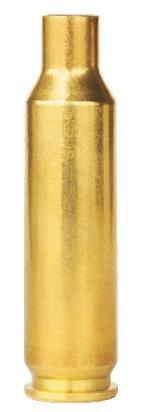




MARCH - 2023 59 Quaker Windows & Doors Freeburg and Eldon, MO quakerwindows.com THE FABRIC OF MISSOURI 100% AMERICAN MADE & OWNED STARLINEBRASS.COM | 1 ( 800 ) 280-6660 PURCHASE FROM YOUR FAVORITE RELOADING SUPPLIER OR ORDER FACTORY DIRECT. • Superior mast production • Greater survivability • Faster growth Bucks’ Unlimited Oaktm is a trademark owned by the University of Missouri (“MU”) for a tree developed at MU with the support of Forrest Keeling Nursery. Forrest Keeling Nursery is the exclusive licensee for this product. Wildlife are wild about... 800 - FKN -2401 • (573) 898-5571 • forrestkeeling.com BRANSON, MISSOURI 417.334.6380 LilleysLanding.com Boat Rentals Fly & Tackle Shop Fishing Guides
Plywood Canoes

60 CONSERVATION FEDERATION Feature Story
It’s a guaranteed conversation starter. Paddling down the river in your homemade plywood canoe, you are sure to garner comments, questions and compliments. Just ask Ted Haviland of Summersville. He’s been making plywood boats for some 20 years and paddling them mostly on the Jacks Fork and Current Rivers in the Ozark National Scenic Riverways. Often referred to as Old Man River, Ted has been a river rat from way back. He and his wife, Pat, have been leaders in the Scenic Rivers Stream Team Association for 30 years. Countless river cleanups, float trips and water quality screenings later, Ted is still passionate about the rivers and paddling. And about building boats.
For himself, he has built five canoes, two kayaks and is working on a third kayak. But his passion isn’t limited to his own boats. To the delight and good fortune of others, Ted teaches annual (except during the pandemic) workshops on how to build your own 14-foot plywood solo canoe. The most recent was held in October at Paddle Stop in New Haven, on the Missouri River. Sponsored by Scenic Rivers Stream Team Association and Missouri Stream Team 713, the workshop amazed and intrigued the 10 lucky participants. This was Ted’s sixteenth workshop, plus he has helped eight individuals to build their own boats.
“My greatest pleasure,” says Ted, “is introducing others to a craft that they can use to get on the river—building a boat.”
During the two-day workshop, each student receives printed directions on how to build a boat and hands-on experience actually doing it. They work on two boats, alternating between the boats to allow time for the materials to dry. Ted and early arrivals get one boat started on Friday so that it is dry and ready to work on when the entire class arrives Saturday.
“This workshop was such a treat,” says Sarah Wright, of St. Louis. “It was so cool to walk in the first morning to a pile of plywood and watch it turn into a vessel. The group fit together right away; between Ted's personality and the relaxed atmosphere of Paddle Stop, we all felt comfortable jumping in.”
No special woodworking skills are needed to participate in the workshop, just a willingness to pitch in and help. Ted’s hope is that people will get the basics they need to go home and build their own. The finished canoes are lightweight, less than 40 pounds, making them easy to carry and load.
“There were techniques and tools that were new to me,” says Sarah, “but between Ted and other participants, there was always help nearby. I'd really like to try my hand at this again. This weekend knocked down the wall and made this approachable.”
At the end of the weekend workshop, a drawing is held for one of the boats, and Ted takes the other one home to finish it up and it is then raffled off as a Stream Team fundraiser. This year, Dave Tobey, of Eminence, was the happy winner.

MARCH - 2023 61 Feature Story
(Cover) The author with her plywood canoe, which she is donating as a fundraiser for the Ozark Riverways Foundation. (Photo: Sue Rakes) (Top) Ted Haviland gestures as he explains the next steps in building a plywood canoe. (Photo: Mary Billman)
Feature Story
“Imagine my surprise when I won the drawing for the canoe our group built,” says Dave. Unfortunately, the boat is only temporarily in his keeping. “I had to miss a friend's wedding to attend the workshop. In an effort to apologize for missing Todd and Jen Wilkinson's wedding, I promised that if I won the boat it would be my wedding present to the happy couple. So now the boat is sitting in my garage waiting for Todd to add some finishing touches to the boat. I know Todd and Jen will use the boat during some cleanups on the James River (near where they live in Springfield). The upside for me is that I will get to build another boat with Ted.”
Sarah credits Ted for making the workshop accessible to people of varying skill levels. “Ted presented everything in nice bite-size pieces and put the tools right in our hands,” she says. “He did not gatekeep his knowledge. He let us in on his secrets, giving us tips on the boats we were building along with advice for future plans.”
Dave echoes Sarah’s praise. “The workshop was a wonderful opportunity to spend a few days working with Ted, who is a Jacks Fork River legend,” says Dave. “Ted reinforced the old saying, ‘A good man is always worth listening to’."


Ted’s assistant for the workshop was Linda Mercurio, of Illinois, who built her own wood canoe with Ted last year. In addition, Mary Billman, of Troy, and this writer, who both have built boats with Ted in the past, helped out.
“This was the ultimate teambuilding adventure,” says Sarah. “The Stream Team program really planned an amazing workshop. They pulled all the right pieces together for an unforgettable weekend.” And the location was a plus, too. Paddle Stop is a canoe and kayak rental operation in New Haven, as well as a micro-brewery and gathering place, and in the big workshop area, they build state-of-the-art custom boats, many for long-distance paddlers on the Missouri and Mississippi Rivers.
62 CONSERVATION
FEDERATION
“Paddle Stop was such an inspiring location. Having the amazing owners and staff there all weekend just added to the welcoming atmosphere of the entire workshop,” says Sarah. “What a treat to end class with a great beer out on the patio just a short stroll to the Missouri River.”
Participants had the option of spending the night at nearby Camp Trinity or making their own lodging arrangements.
Plans are underway for a workshop this fall, but details are still being worked out, says Ted. Maximum class size is 16 people.
Custom construction
As noted earlier, Ted sometimes works individually with people to build boats. Mary, Ted and I are long-time paddling buddies. On one of many floats during the pandemic summer of 2020, Ted suggested that Mary and I build boats with him that fall. It seemed like a perfect pandemic project, and the three of us began a great adventure that stretched over many weekends in October and November that year.
Mary had strong skills using various power tools and doing home repair-type projects, but I was a total novice when it came to any of the woodworking skills. They were patient and helpful and together we assembled our two boats in Ted’s home workshop.

Mary’s artistic abilities showed when she ordered special trim to finish her boat and worked with Ted on creative touches. Mine was plainer than Mary’s, but it looked darn good to me! I proudly show it off to anyone who will walk out to the boatshed with me to take a look.
At least once a summer, Ted organizes a Wood Boat Float, when he and others with wood boats gather on the Current River for a fun day of paddling. The reactions from other people on the river is always astonishment and curiosity. People paddle alongside, asking about the boats, some taking photos and some even asking if they can take one for a trial paddle. It’s a great way to spark river camaraderie.
Would you like a plywood boat but you’re not sure about tackling one yourself? How’s this for a possibility: The author is donating her 14-foot plywood solo canoe, built with Ted in late 2020 and not yet christened, as a fundraiser for the Ozark Riverways Foundation (ORF), the official Friends group for the Ozark National Scenic Riverways and an affiliate member of CFM.
Tickets will be available for a donation online or in person at ORF events throughout this year, and the winning ticket will be drawn on December 30, 2023. For details, visit Ozark Riverways Foundation on Facebook or www.ozarkriverwaysfoundation.org
MARCH - 2023 63 Outdoor News
Barbara Gibbs Ostmann
(Left Top) Ted Haviland begins the construction by gluing the two bottom pieces together. (Photo: Barb Ostmann) (Left Bottom) Ted Haviland of Summersville is known to many as Old Man River. (Photo: Mary Billman) (Right) Starting with patterns traced on sheets of plywood, this group built a canoe during a workshop last fall. (Photo: Mary Billman)
Missouri Wildflowers
Nursery
9814 Pleasant Hill Rd Jefferson City MO 65109
www.mowildflowers.net
mowldflrs@socket.net

573-496-3492
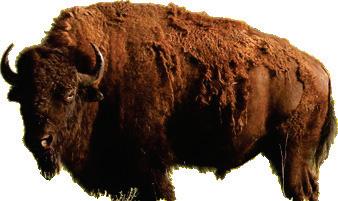

The original seed source of our plants is from wild populations found growing in Missouri. Our plants are as “wild” as we can possibly keep them.


3 Flowers, Grasses, Trees, Shrubs, Vines, sedges, pond plants.

3 Plants for full sun, full shade and anywhere in between..
3 Seed, seed mixes, and custom blends.
3 Expert advice.
64 CONSERVATION FEDERATION



















MARCH - 2023 65 Proud to support our outdoor heritage Missouri’s Electric Cooperatives Free Hot Breakfast Free Hot Food & Cold Beverages at 5:30 Kickback Free Wi-Fi Throughout the Hotel 100% Satisfaction Guaranteed DRURYHOTELS.COM 800-DRURYINN CFM MEMBERS RECEIVE RATES DISCOUNTED AT 10 % You’ve got it bagged with legendary Hodgdon powders. Phone 913-362-9455 www.hodgdon.com H170-044538-6_MOWildlifeGuide_Ad.indd 1 6/13/16 4:30 PM Sign up for CFM's Legislative Action Center to have your voice heard on legislation affecting Missouri's outdoors. www.confedmo.org/lac












66 CONSERVATION FEDERATION CONSERVATION LEADERSHIP CORPS A program of the Conservation Federation of Missouri www.confedmo.org/clc OZARK BAIT&TACKLE • LIVE BAIT • TACKLE • PERMITS • ARCHERY • GUNS • AMMO VERSAILLES, MO 573-378-2220 VERSAILLES, MO 573-378-2220 L AURIE, MO 573-374-6065 L AURIE, MO 573-374-6065 GRAVOIS MILLS, MO *Storage Only* GRAVOIS MILLS, MO *Storage Only* w w w. e d g a r s s p o r t s . c o m w w w. e d g a r s s p o r t s . c o m 3 0 ’ & 4 0 ’ S t o r a g e U n i t s 3 0 ’ & 4 0 ’ S t o r a g e U n i t s missouriwine.org ® SMOKEHOUSE.COM 1-800-624-5426 32819 HIGHWAY 87 | CALIFORNIA, MISSOURI SMOKED MEATS — SINCE 1927 — Ad-simple_'22.indd 1 3/7/22 10:43 AM

Planning Your Future? Include the Conservation Federation of Missouri in your estate plans. Leave a legacy for the natural resources and traditions you have valued throughout your life. Make CFM a beneficiary of your will, trust, life insurance policy, or retirement plan. Any amount helps preserve Missouri’s resources and natural history for generations to come. What will your legacy be? Call 573-634-2322 to find out more information.
To update your contact information or address, please notify us at:






W. Main
City, MO 65101
Bass Pro Shops® is proud to serve the sportsmen and women of Missouri. Since our doors first opened in 1972, we have remained dedicated to the conservation and enjoyment of our resources in the state we call home. Proud Partner of Learn more at basspro.com/conservation WARMER WEATHER CALLS FOR NEW ADVENTURES START YOUR NEXT ADVENTURE HERE basspro.com @ BP23941100
Conservation Federation 728
Jefferson
or call 573-634-2322.





























































































































 David Urich
David Urich



























































































